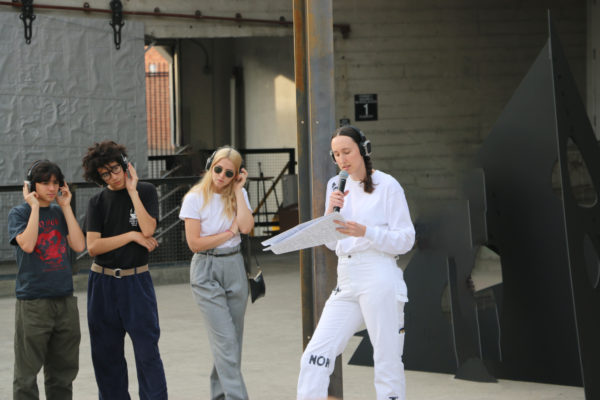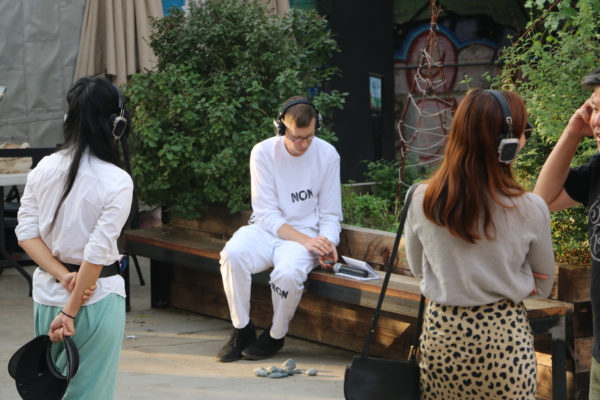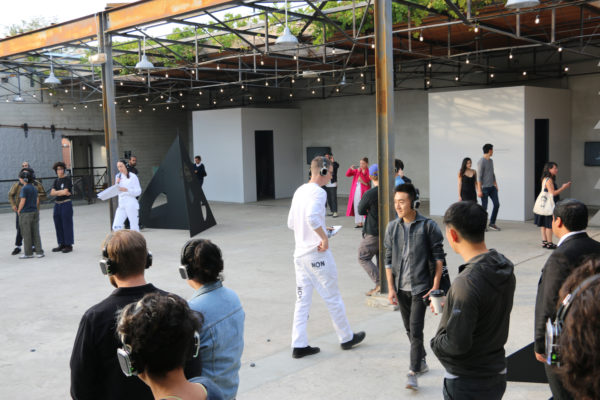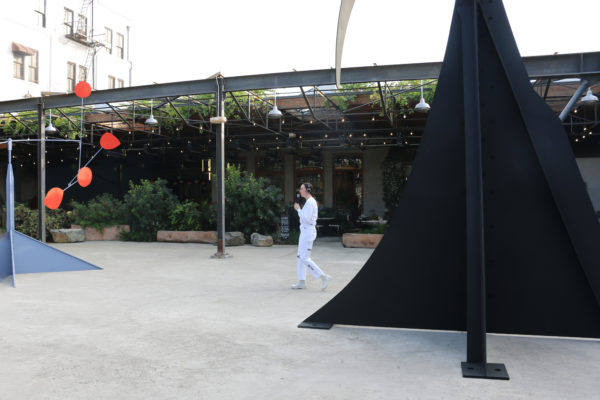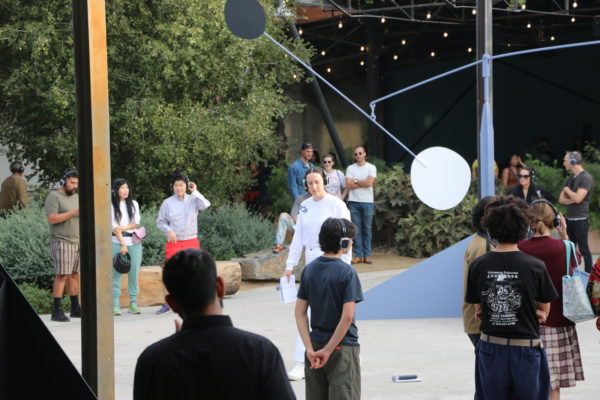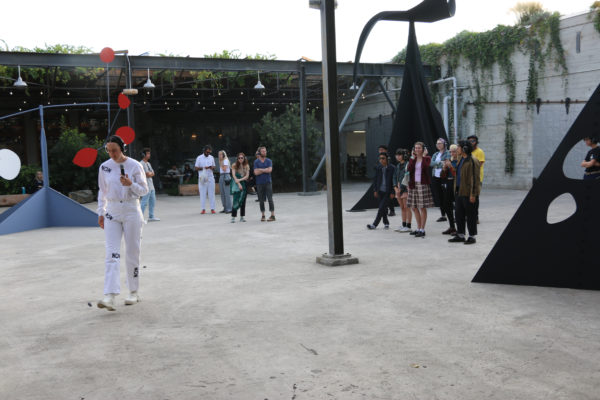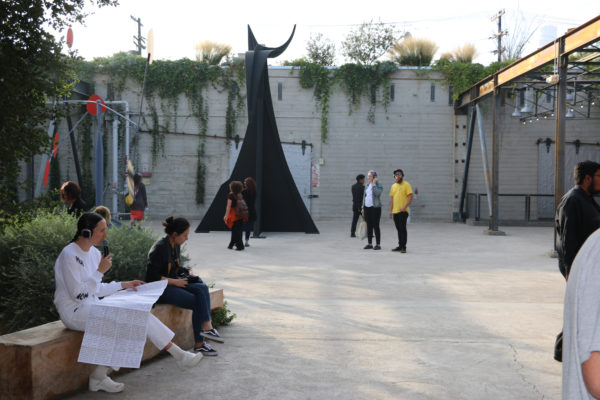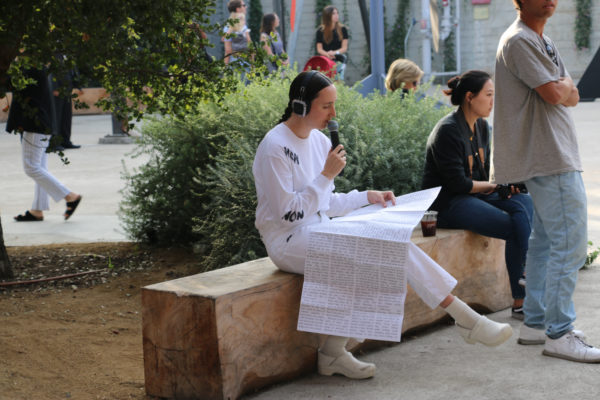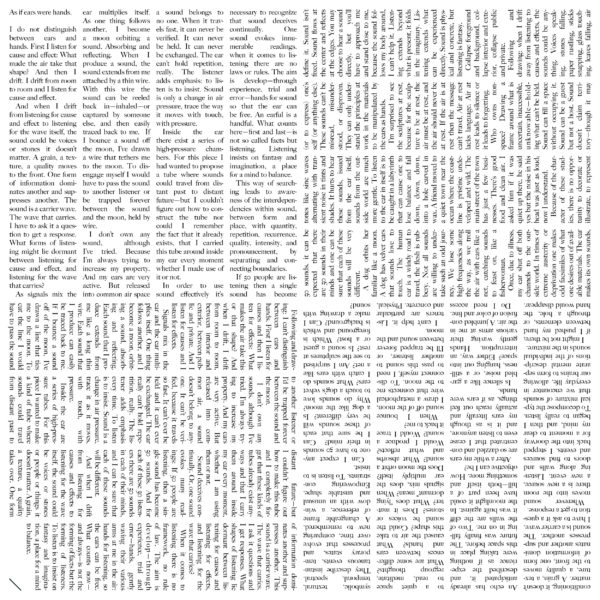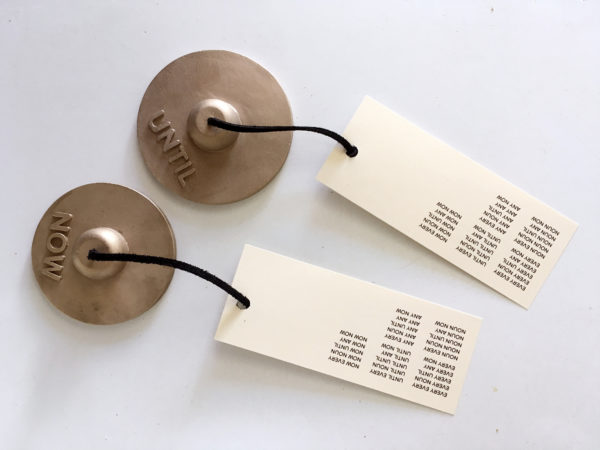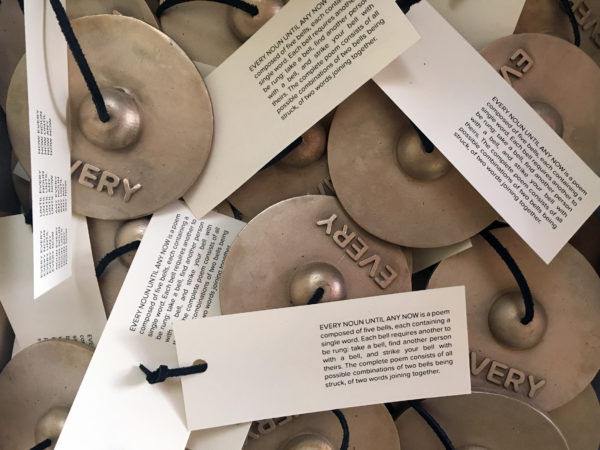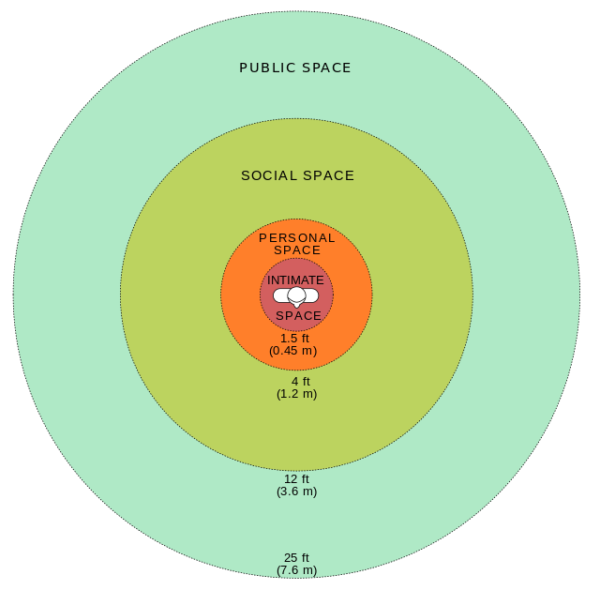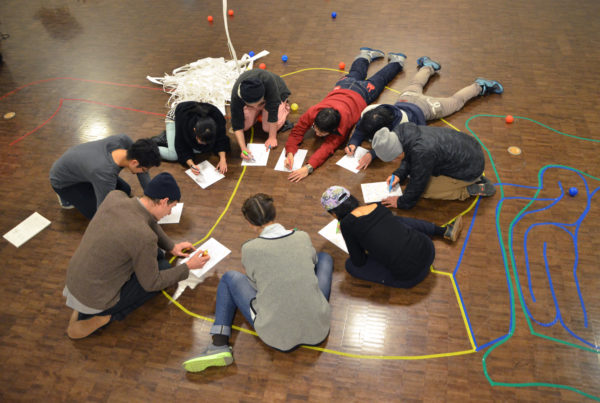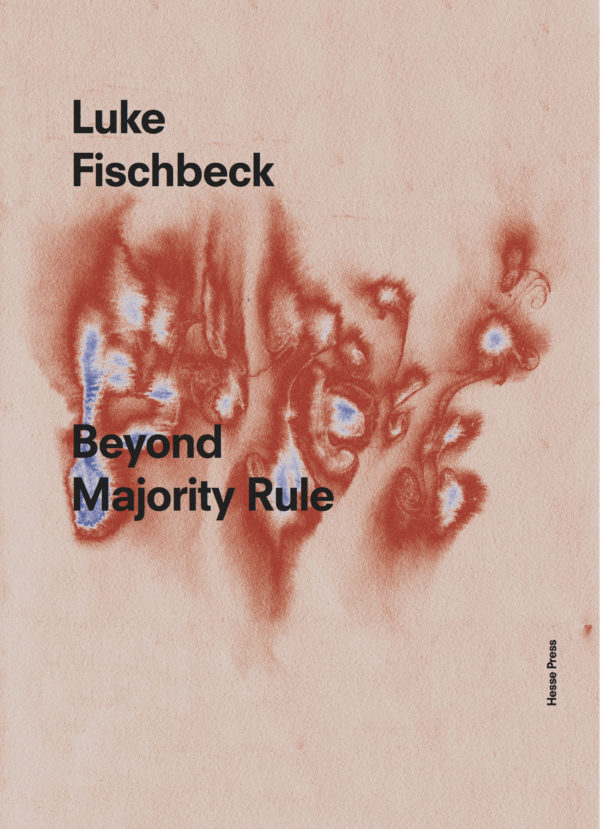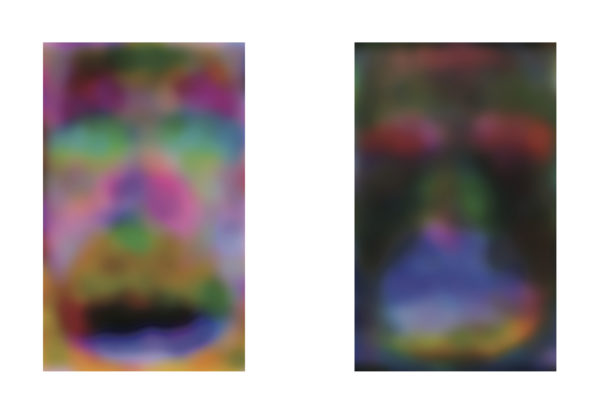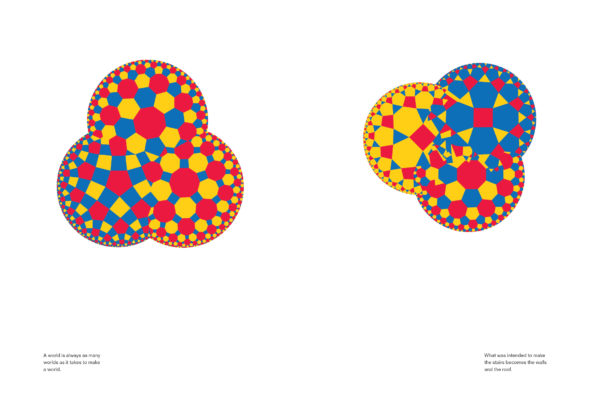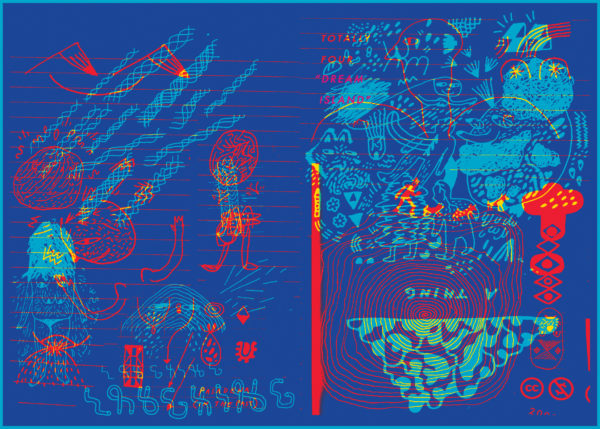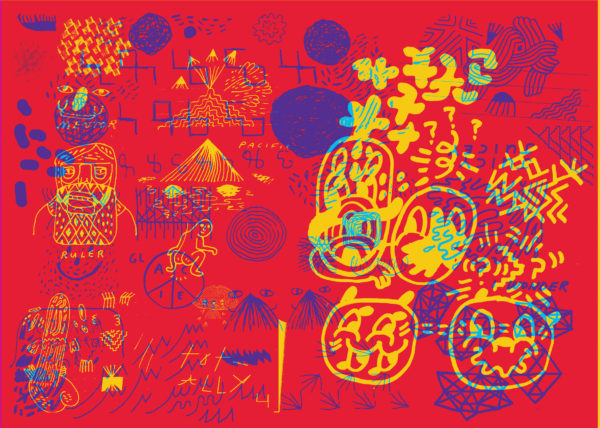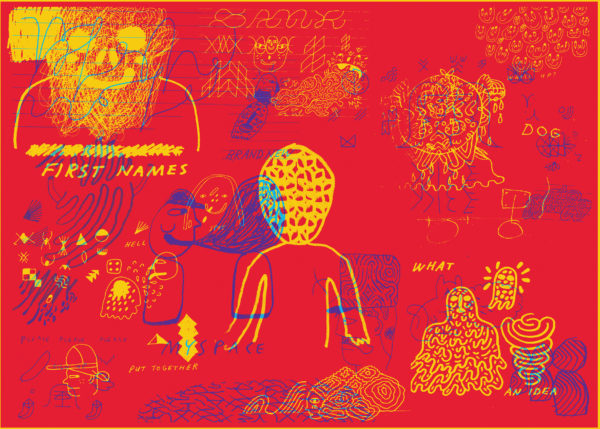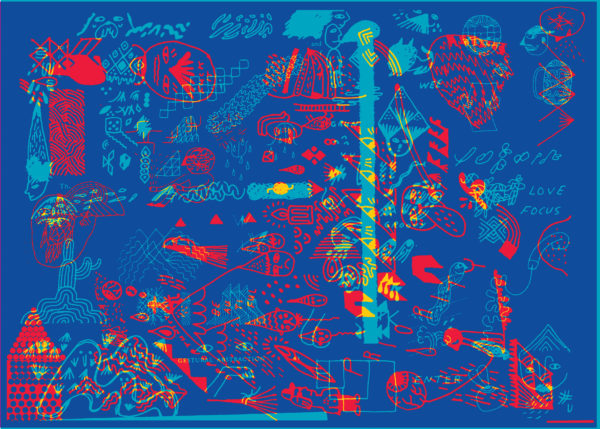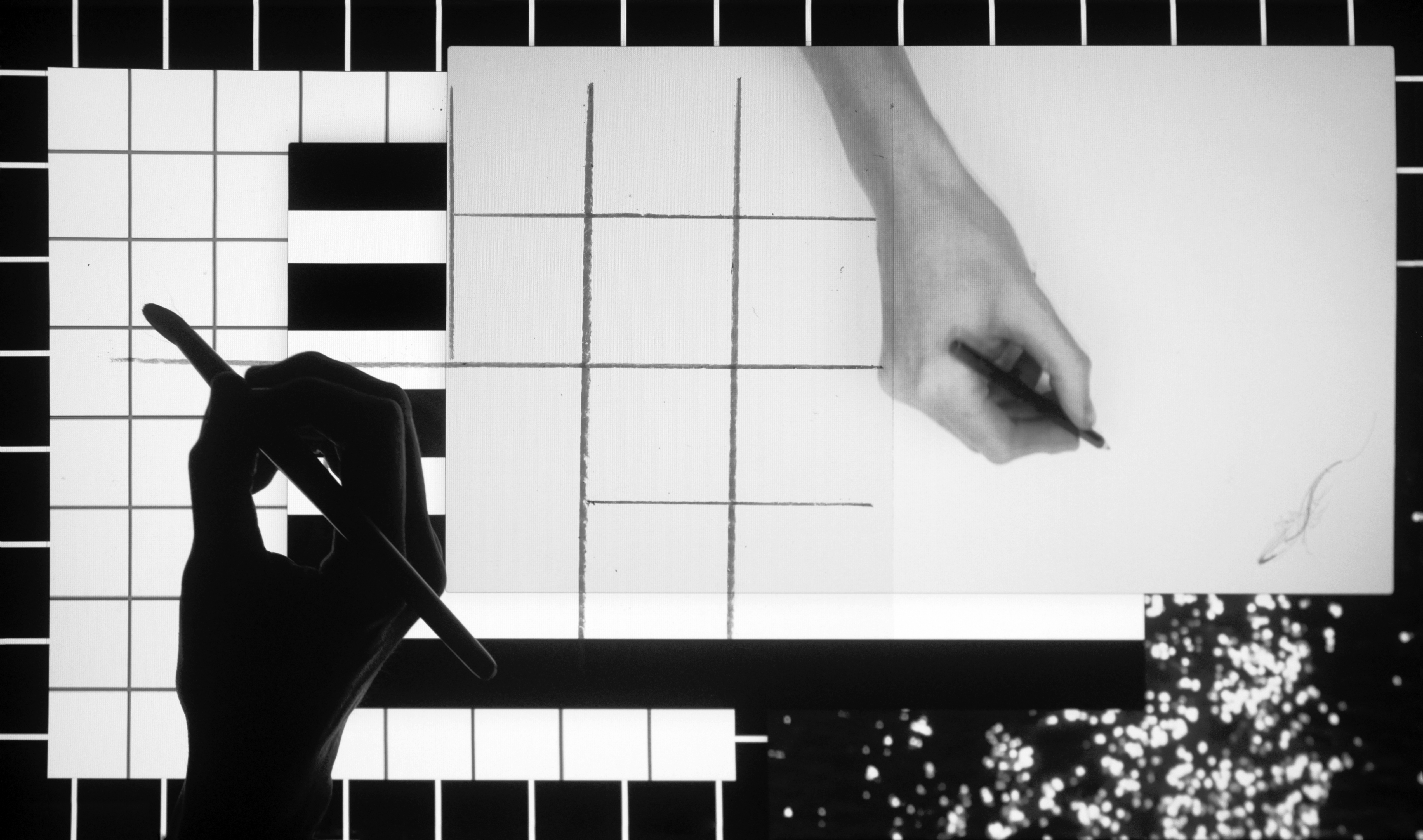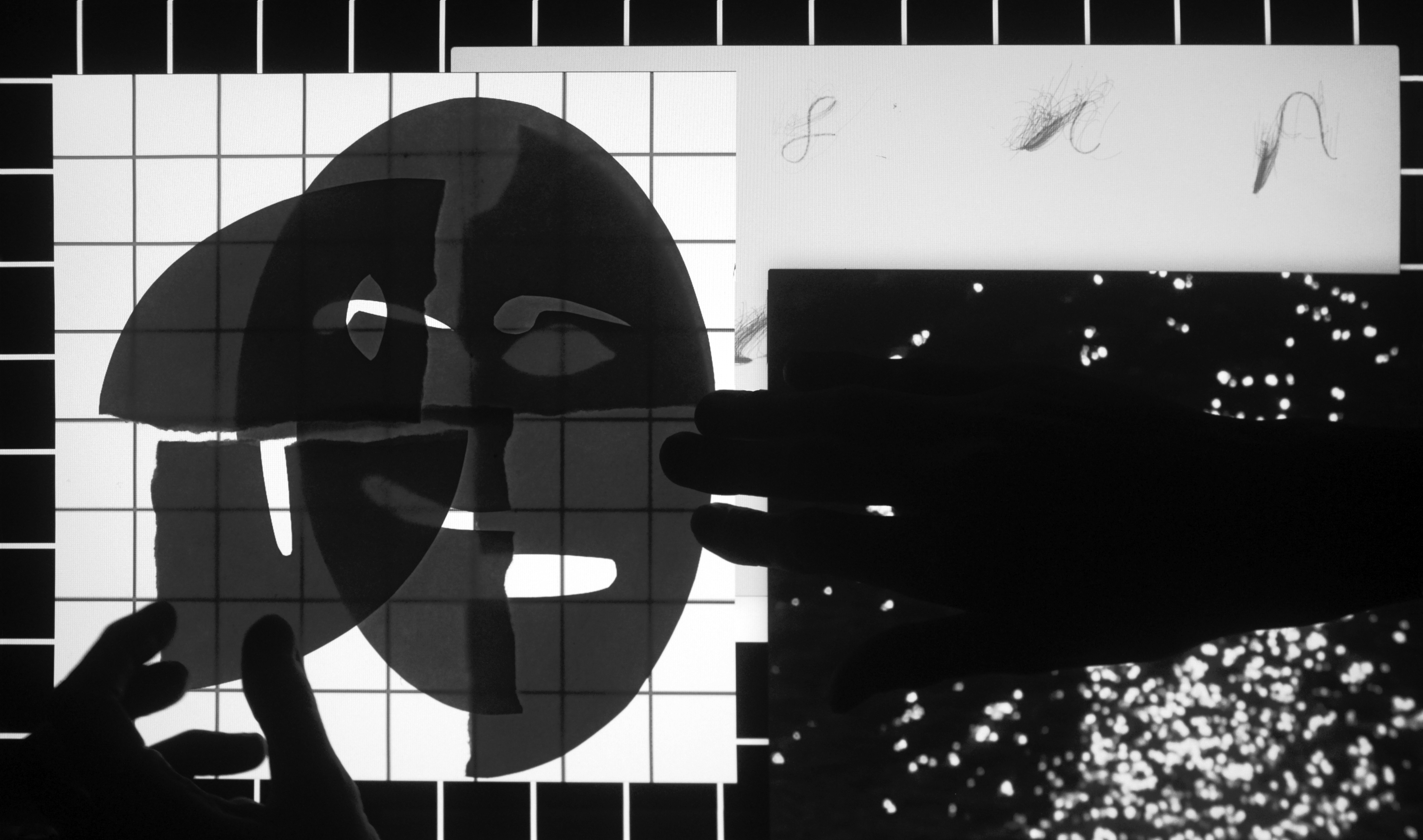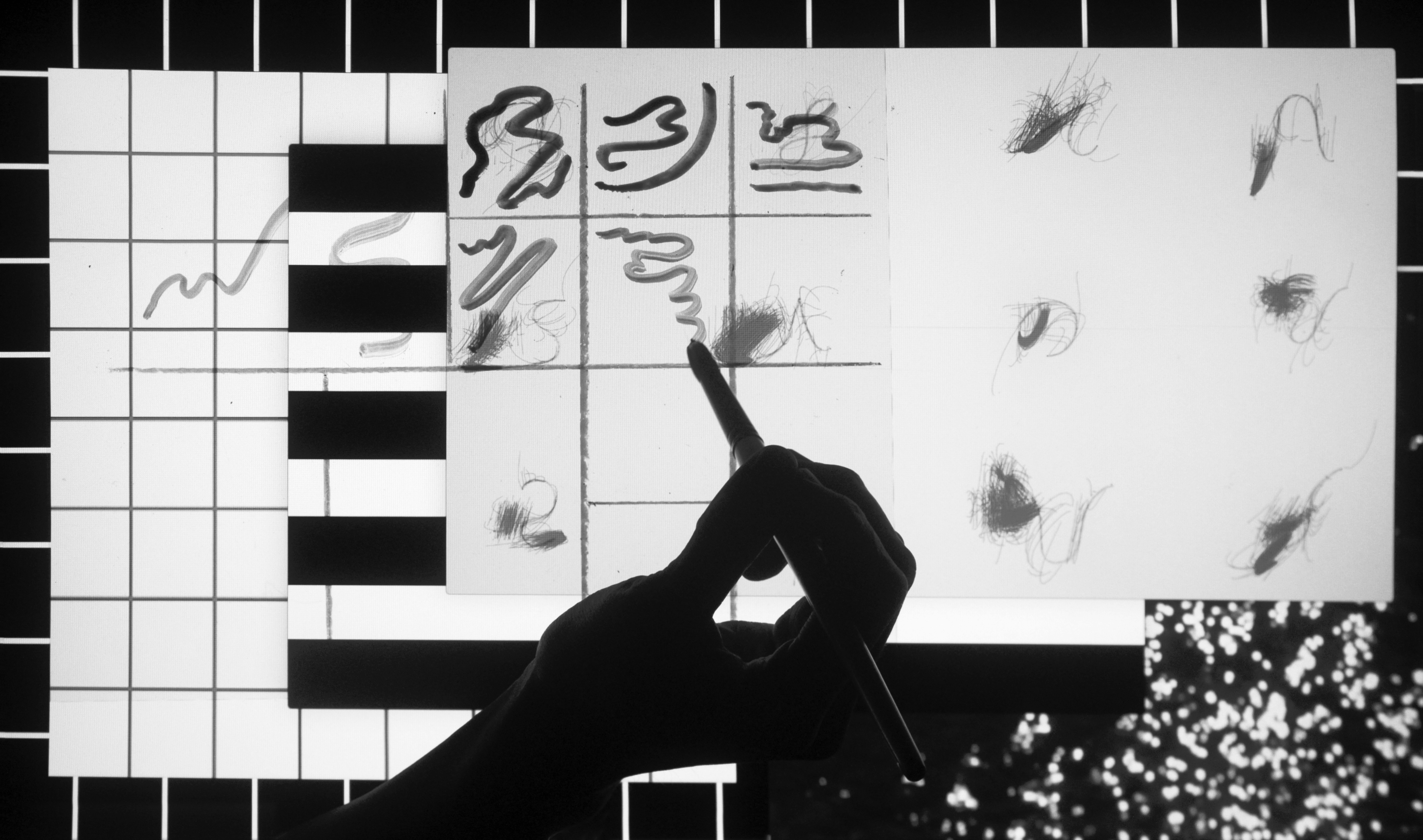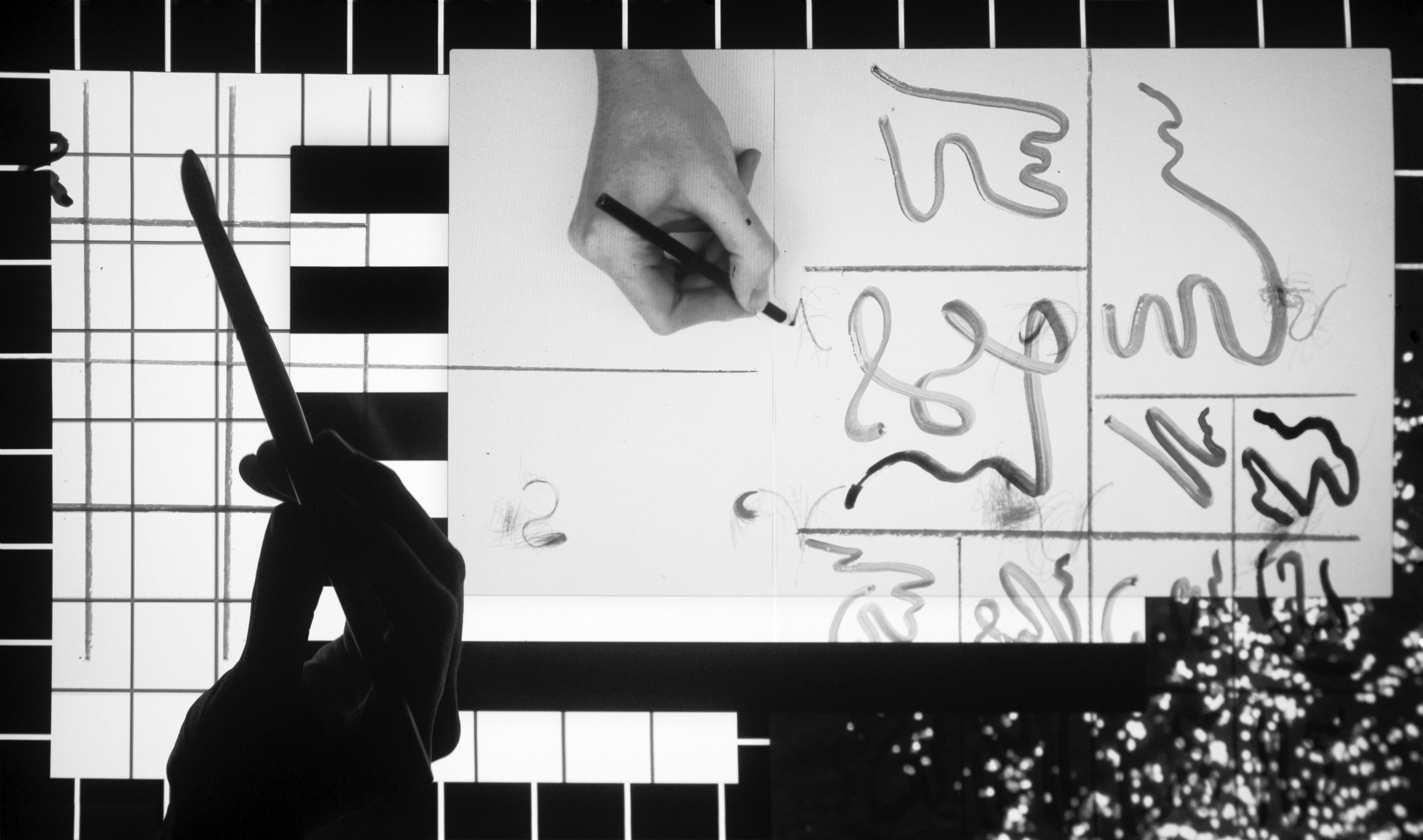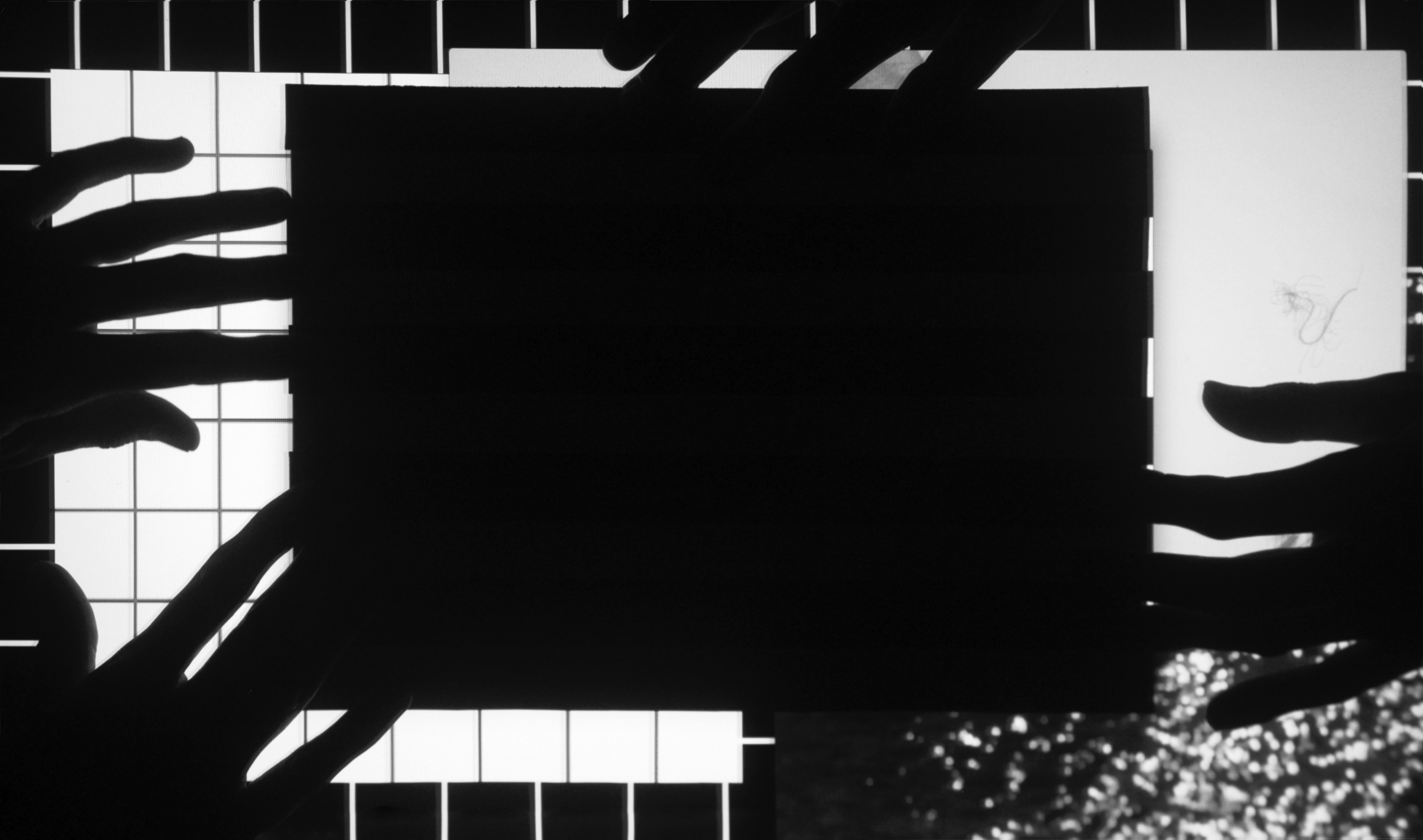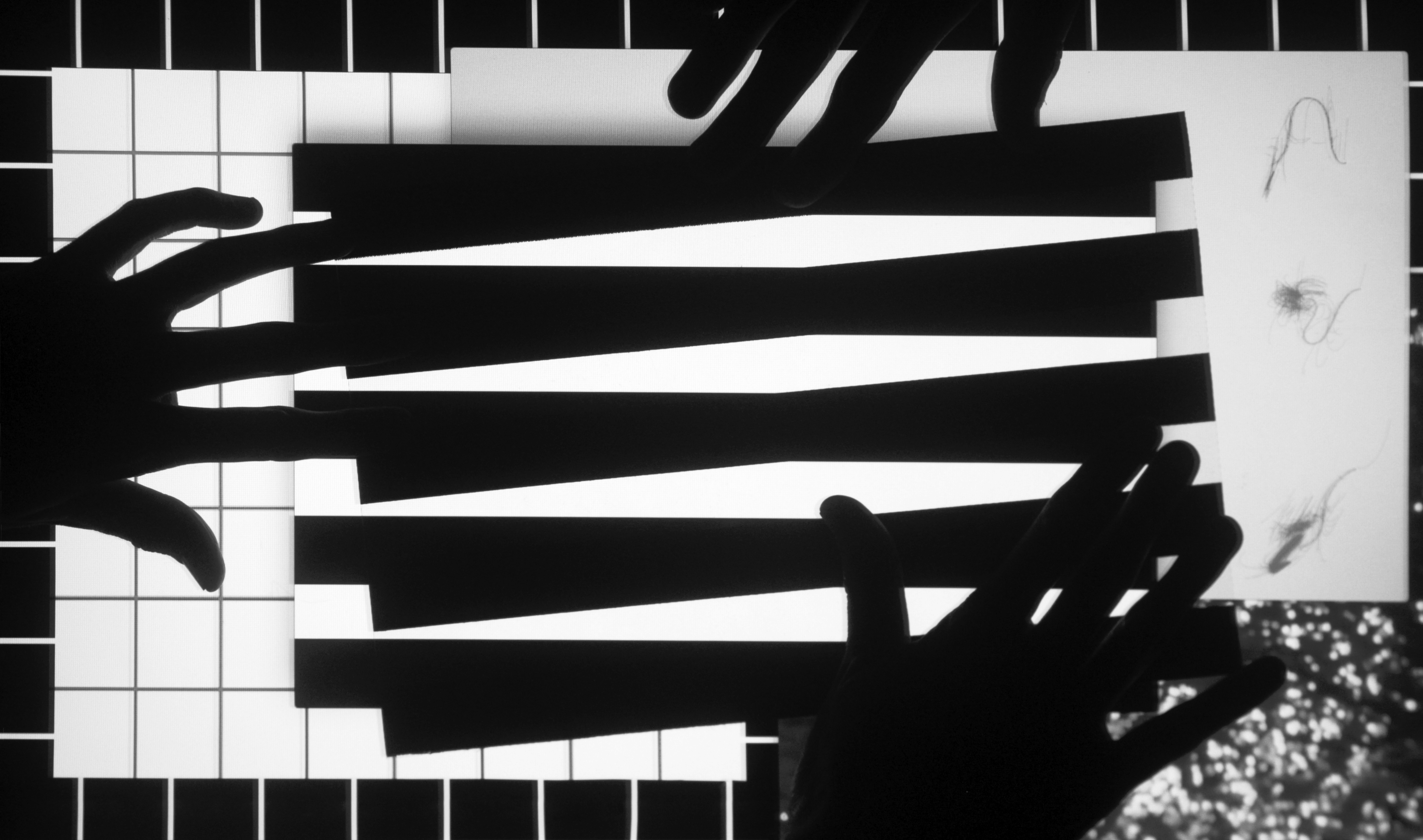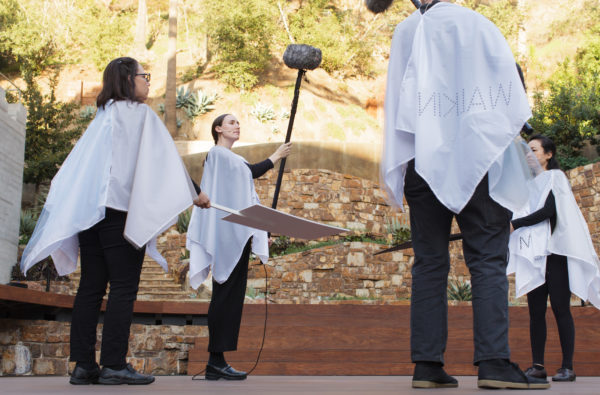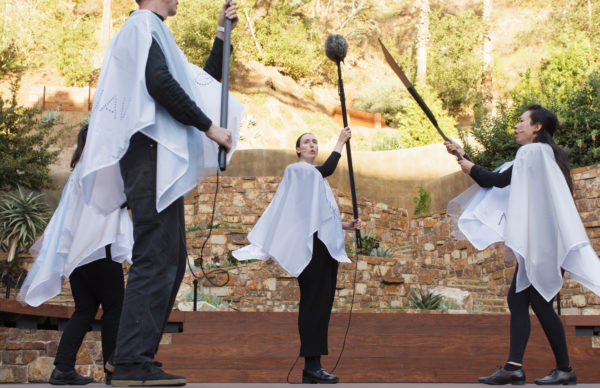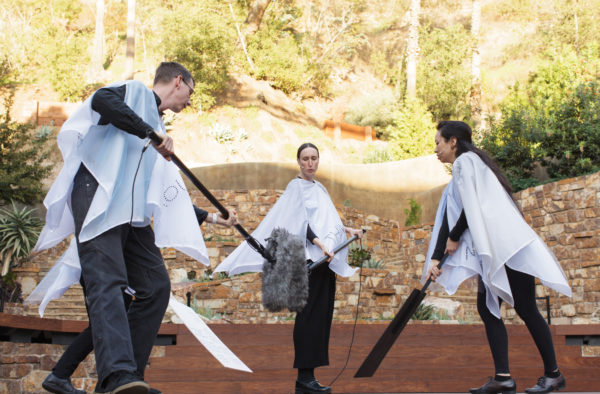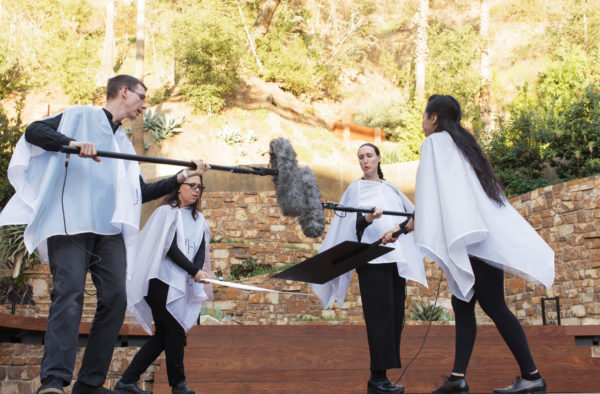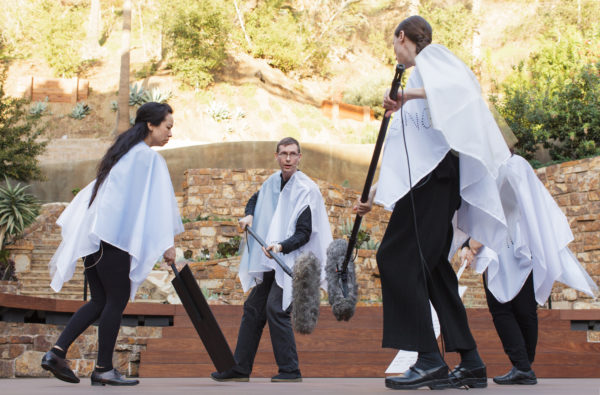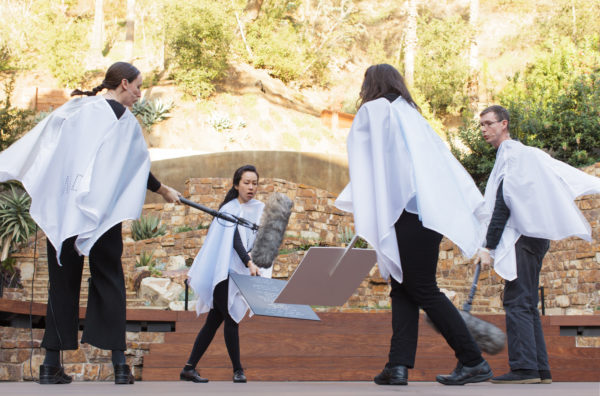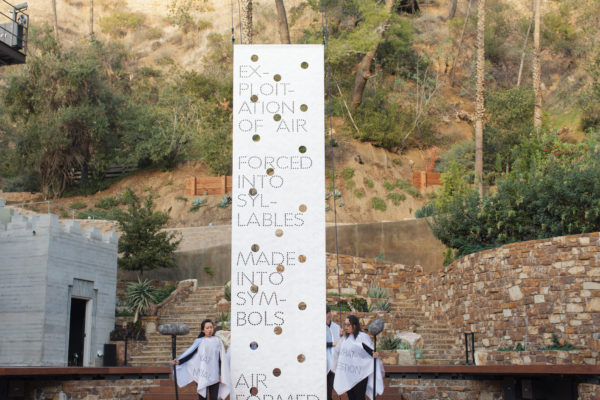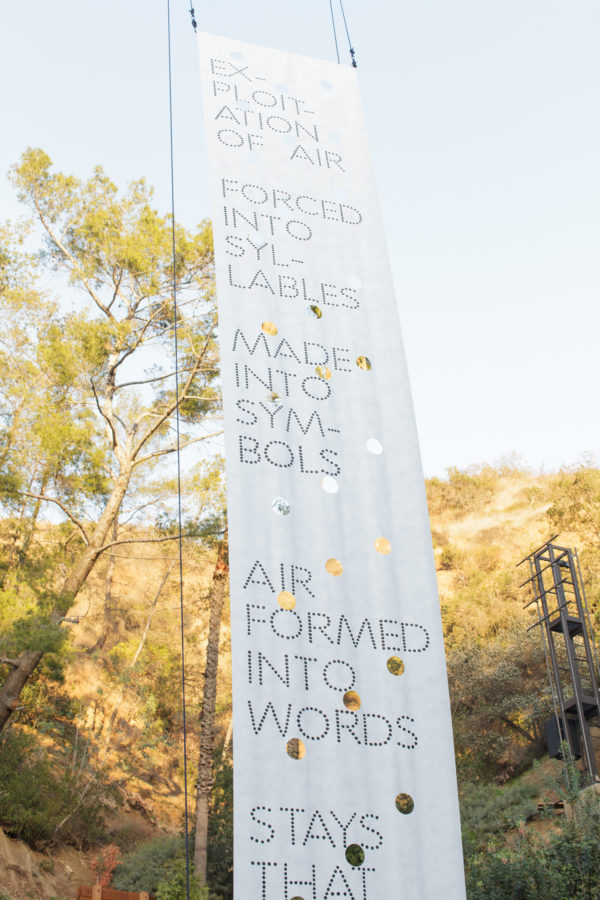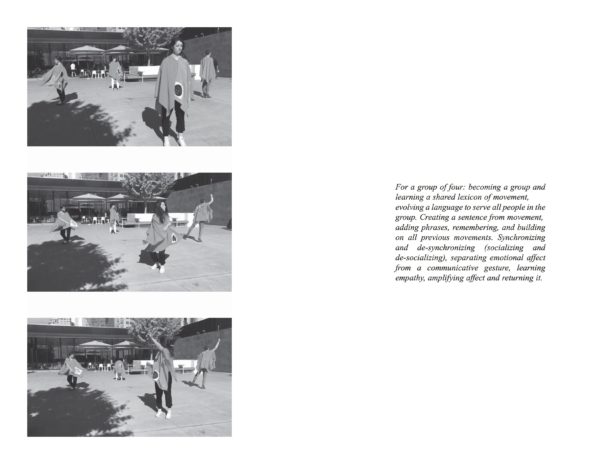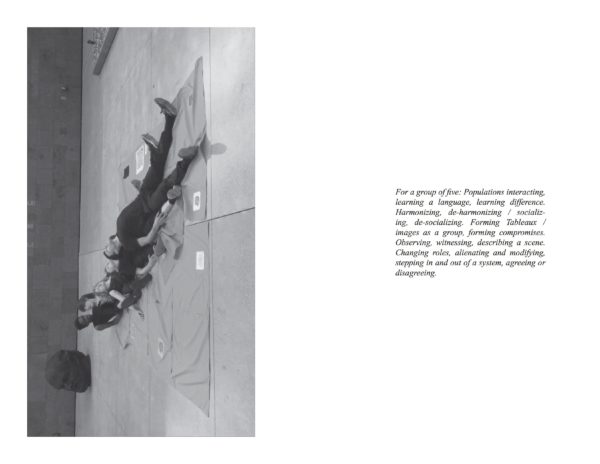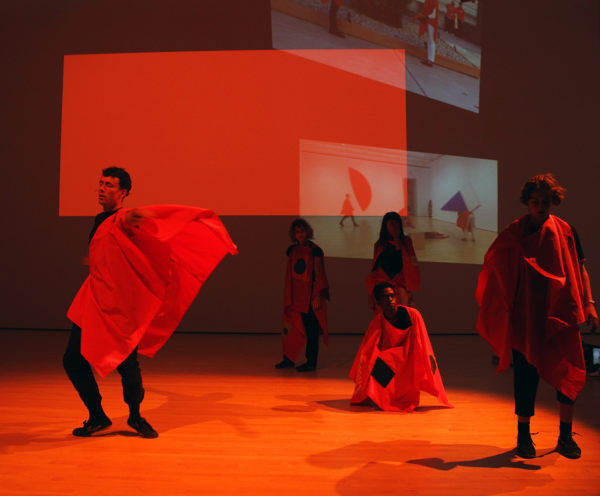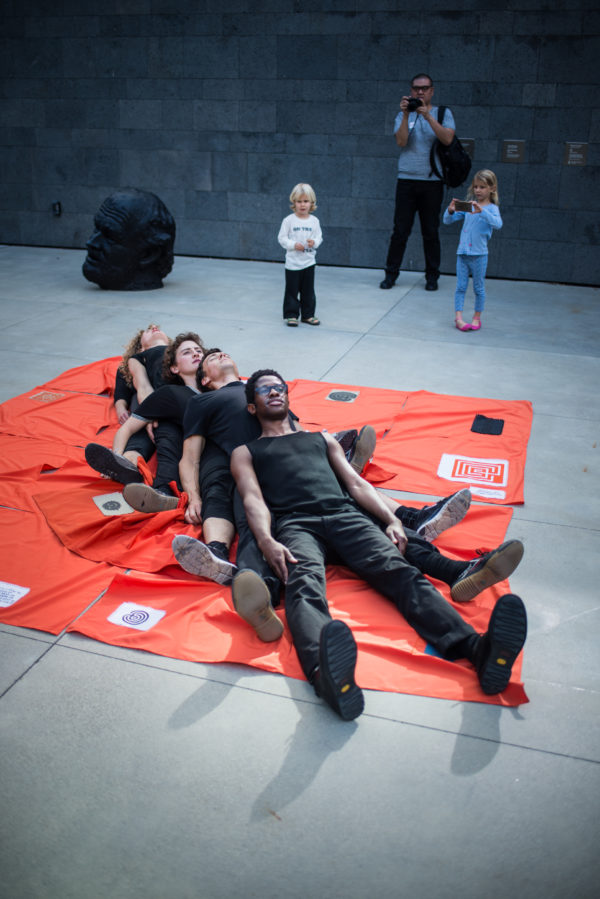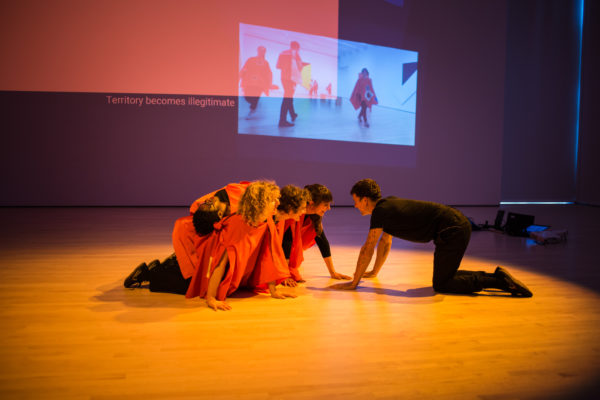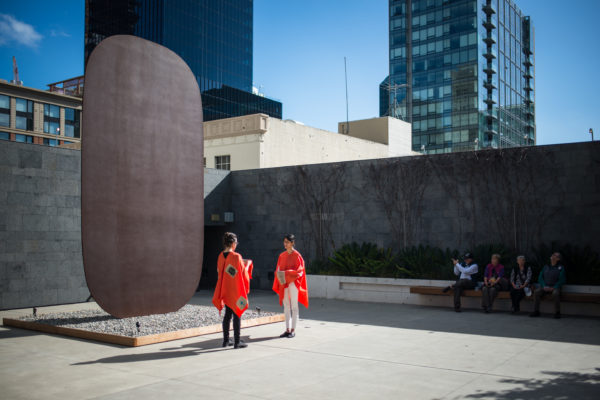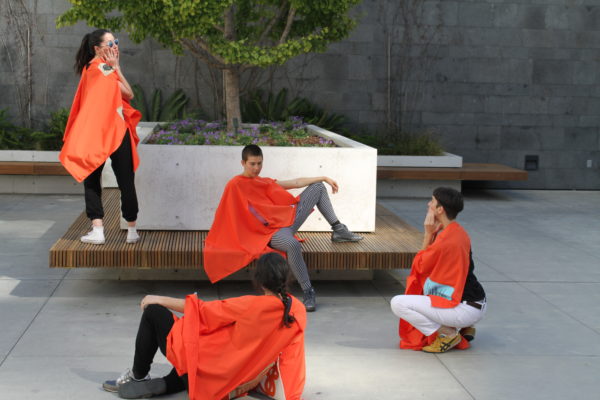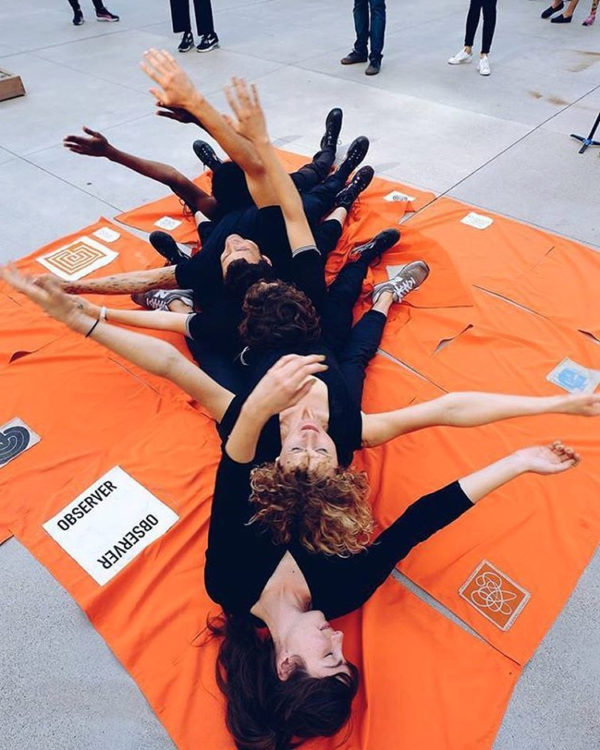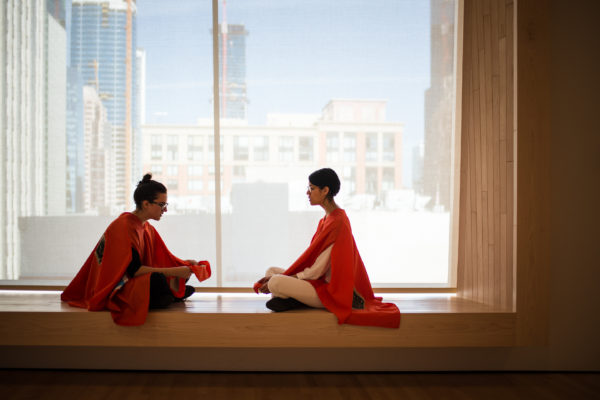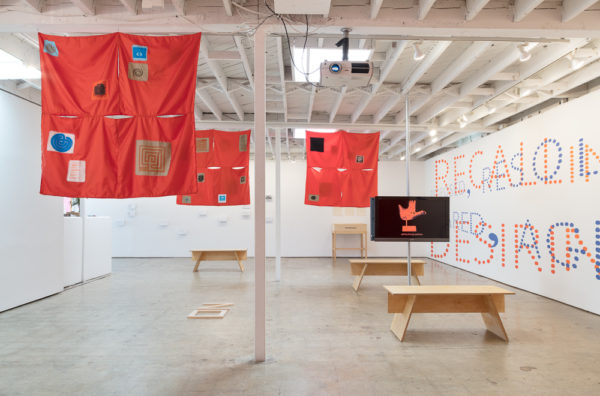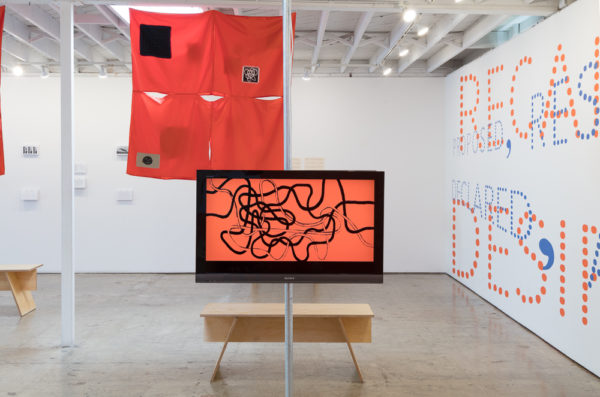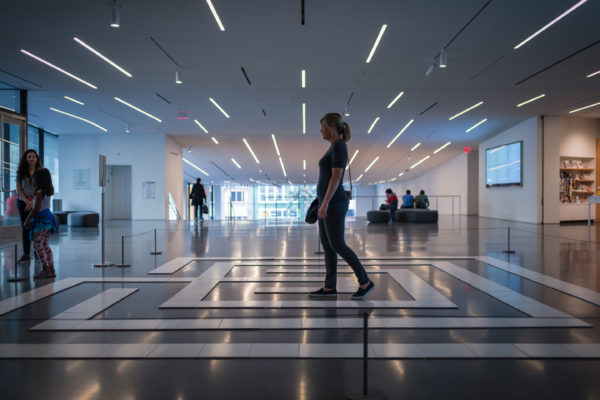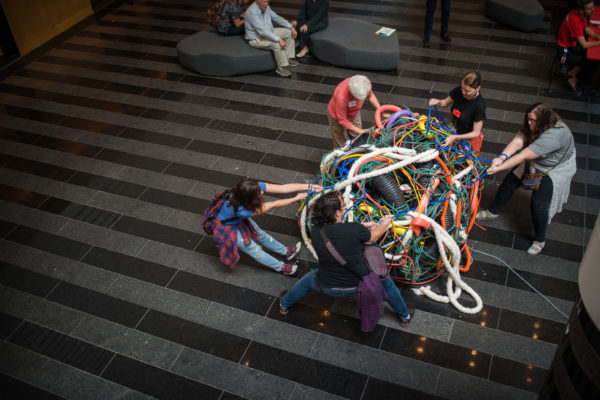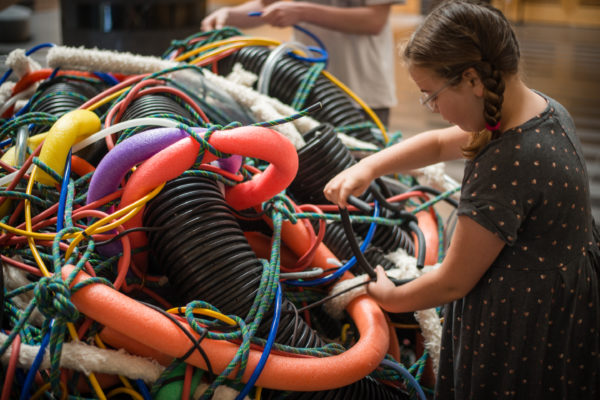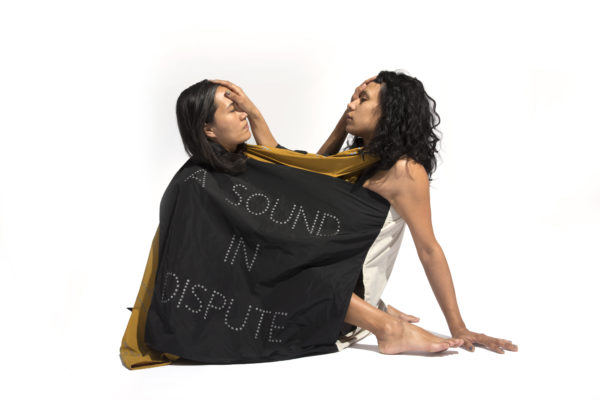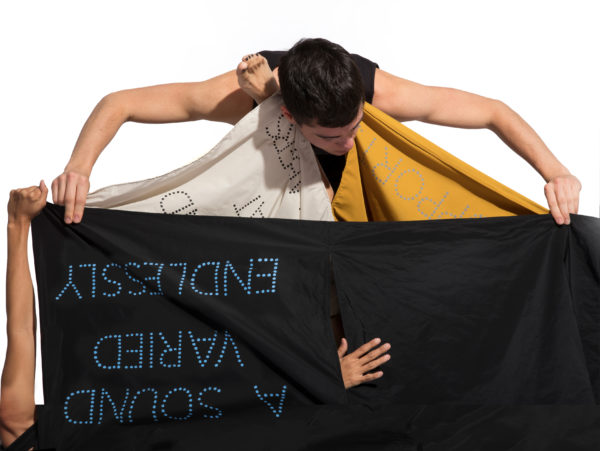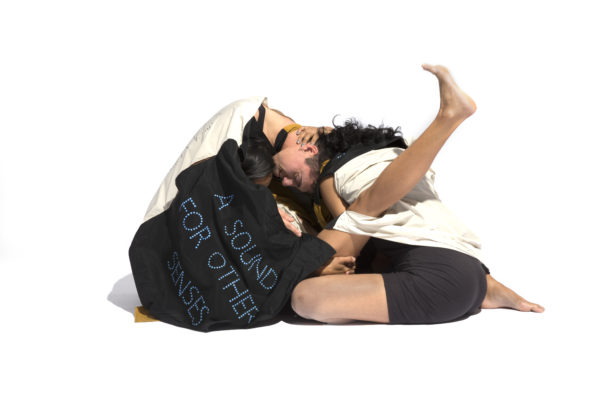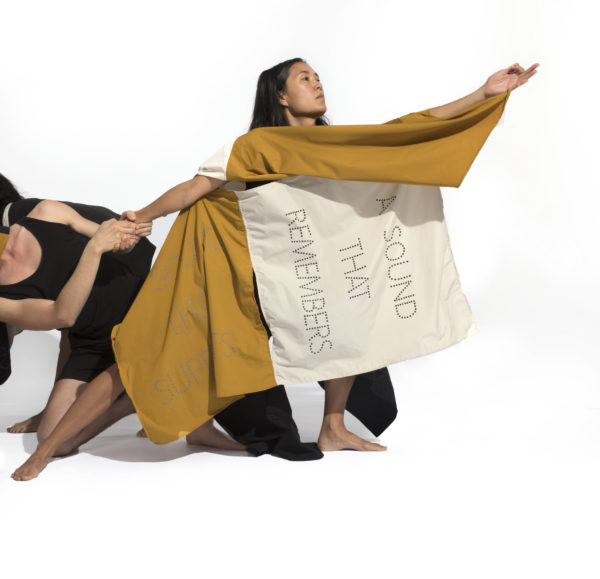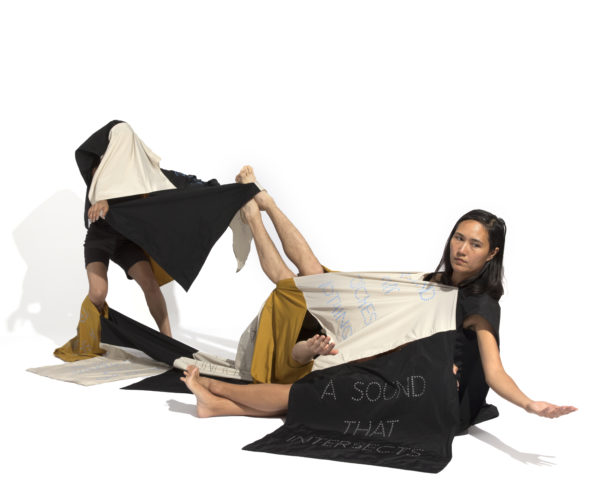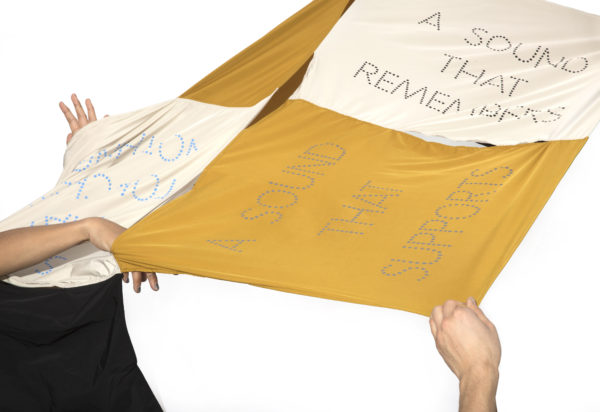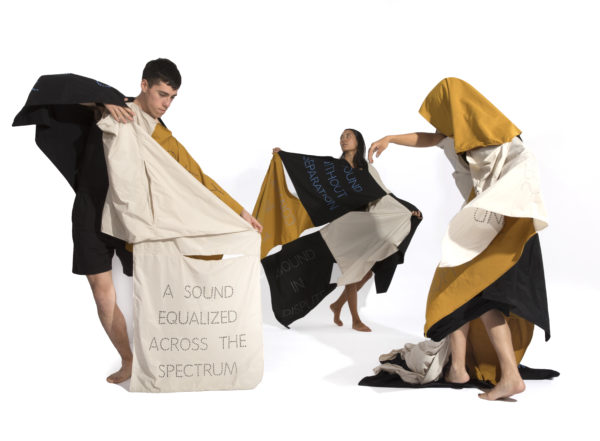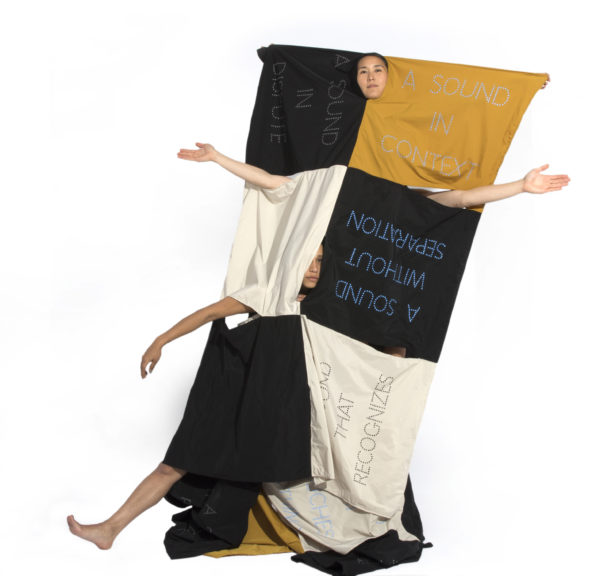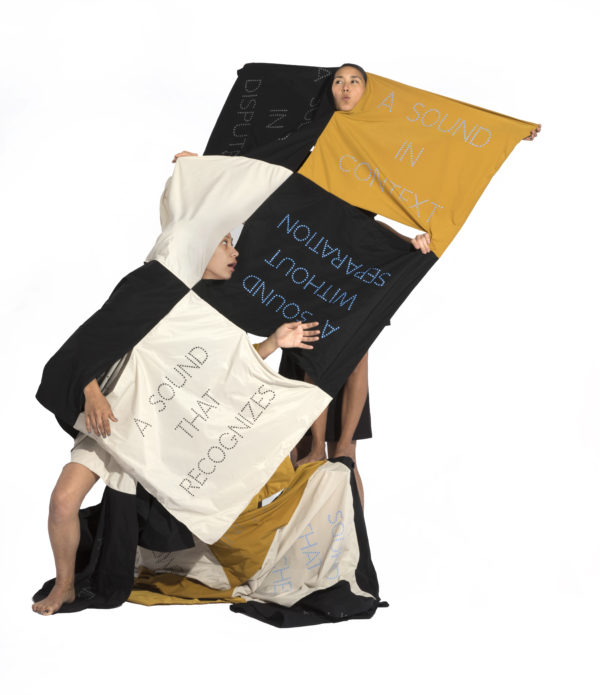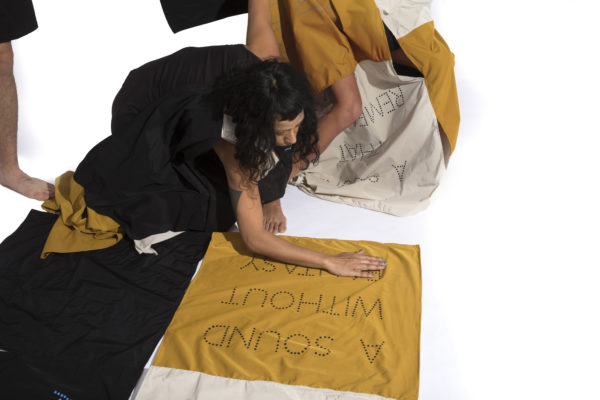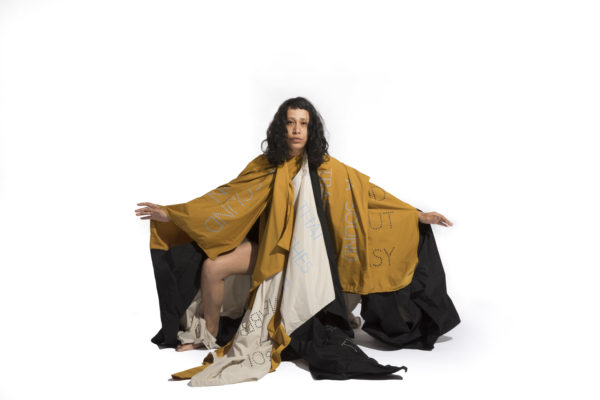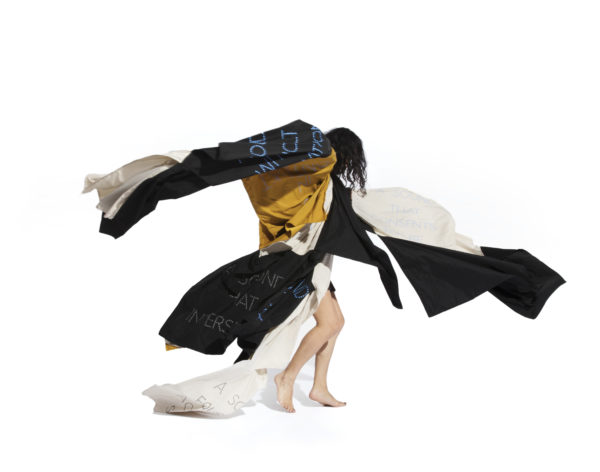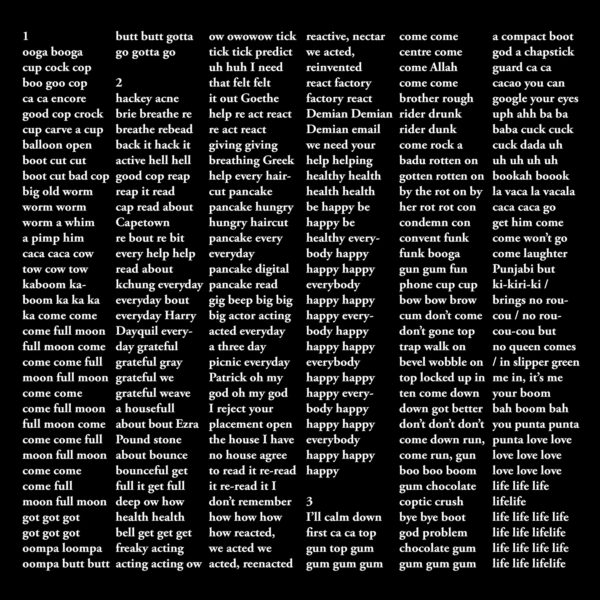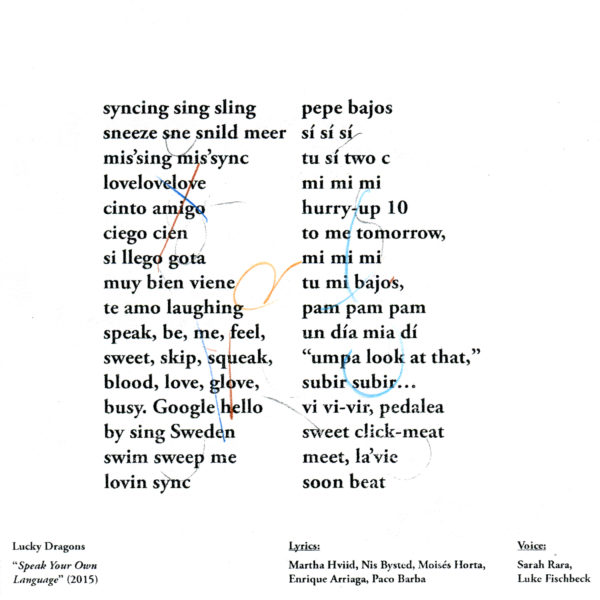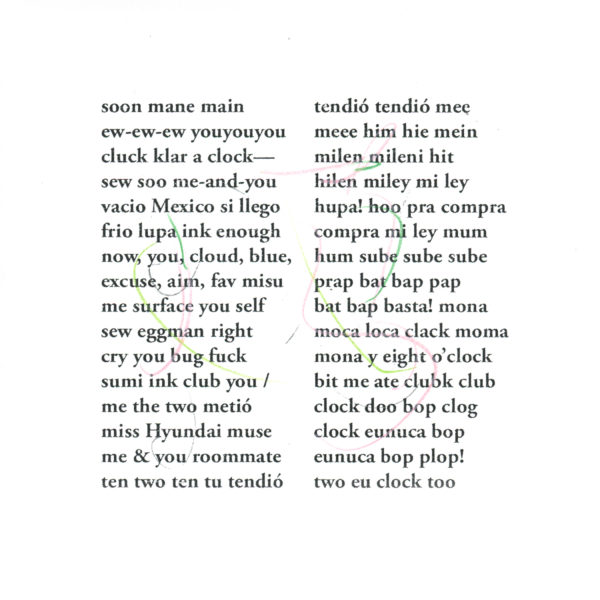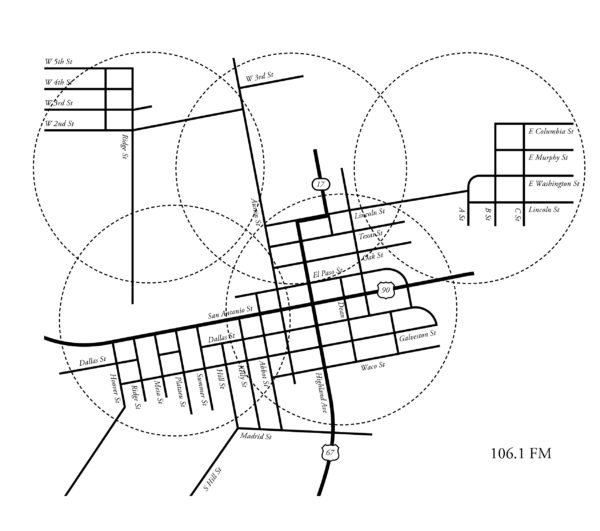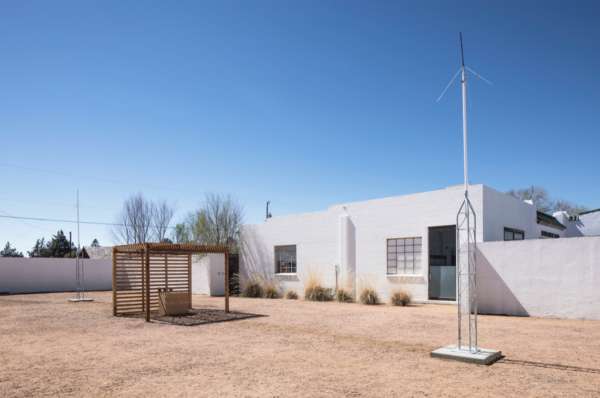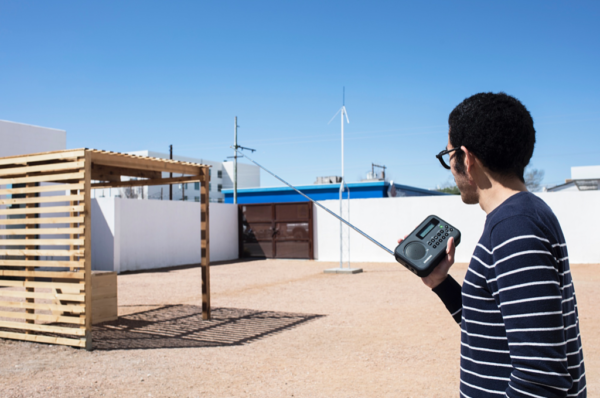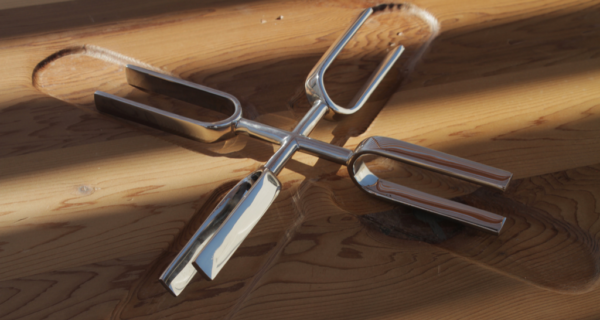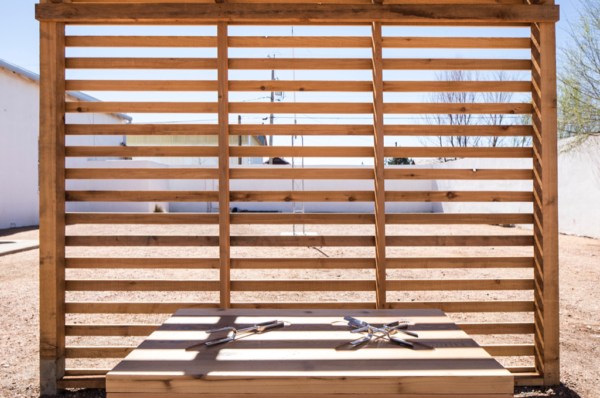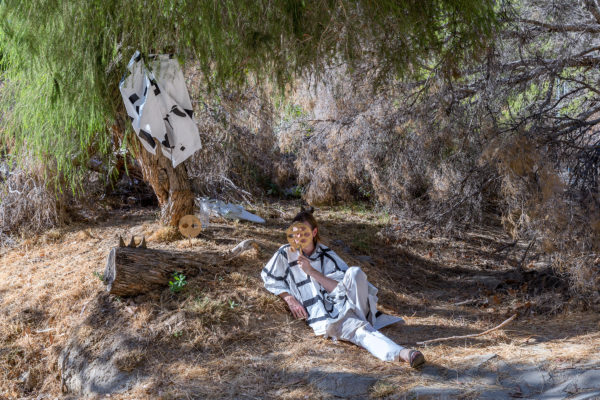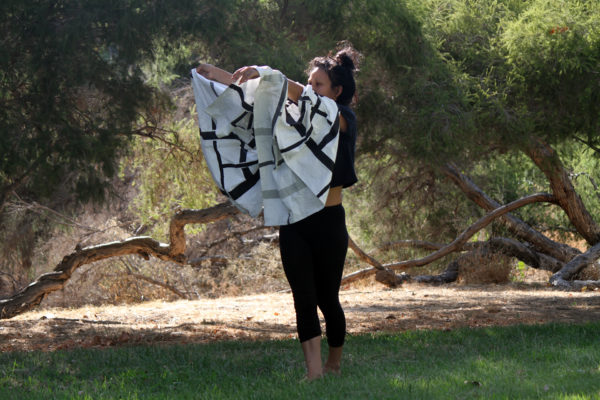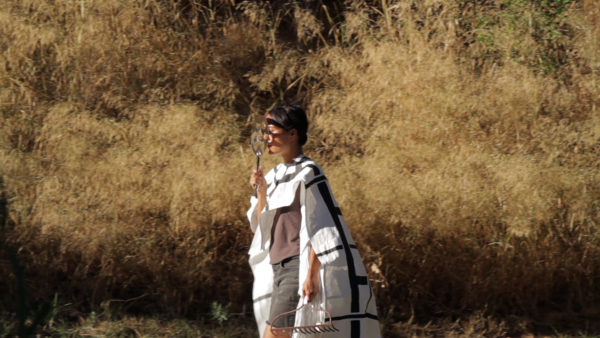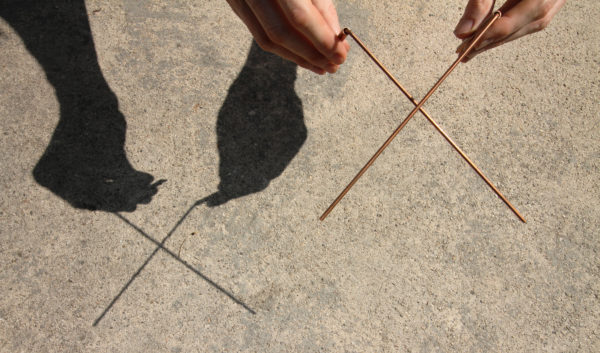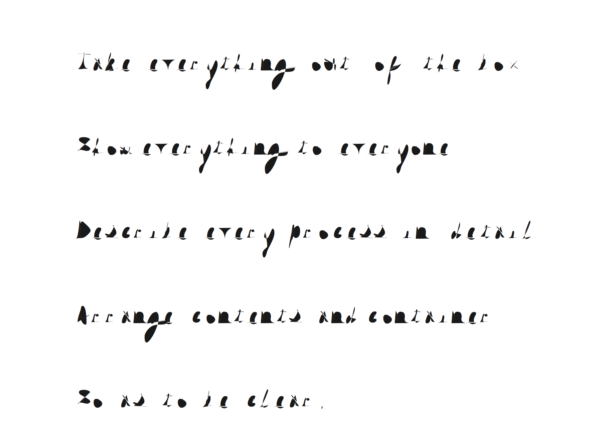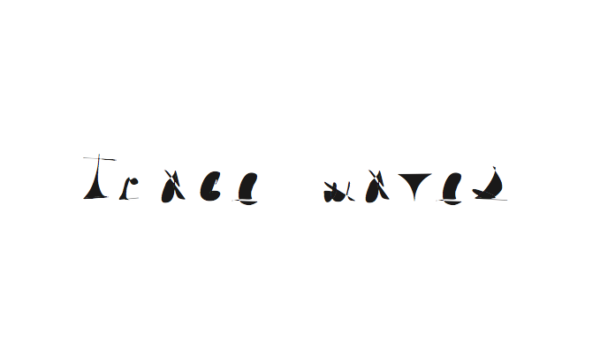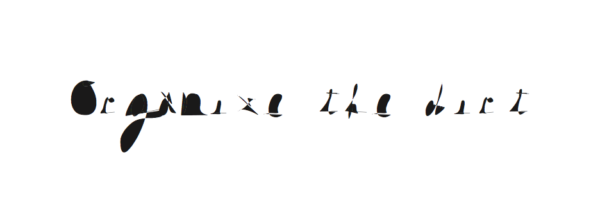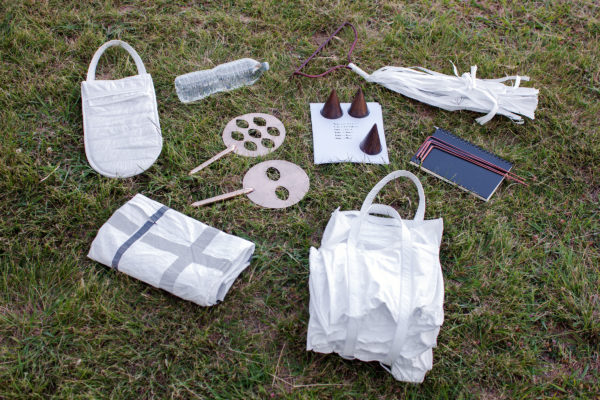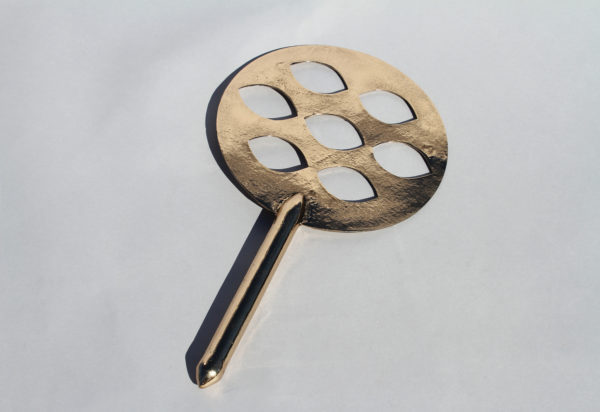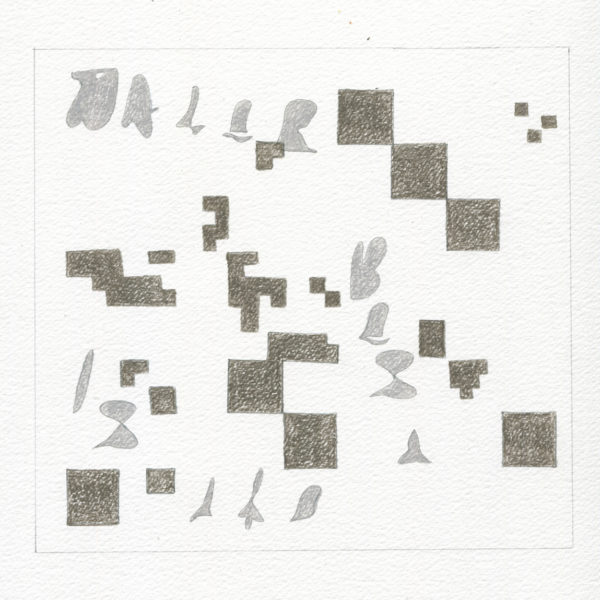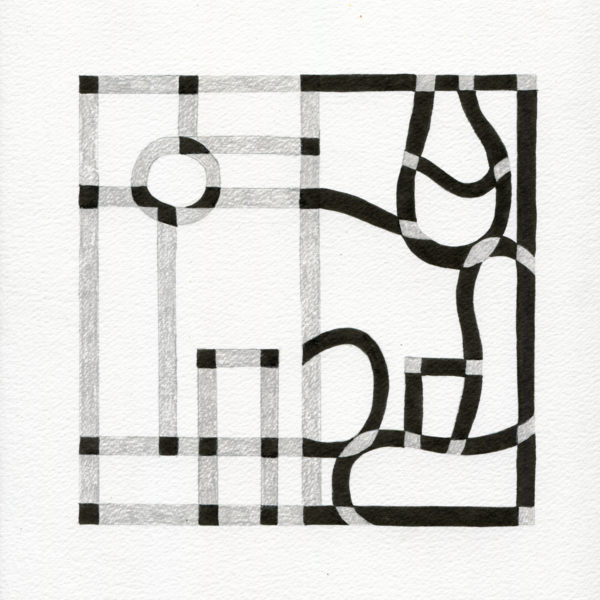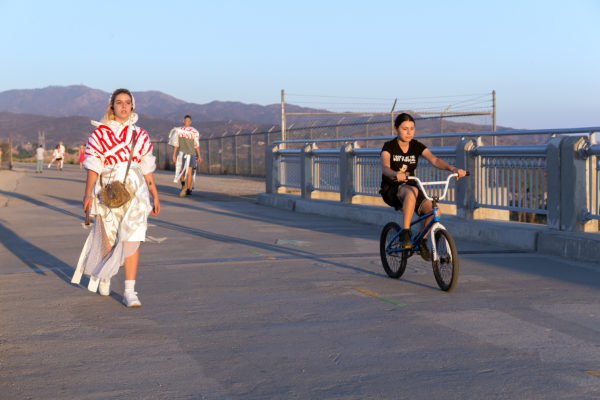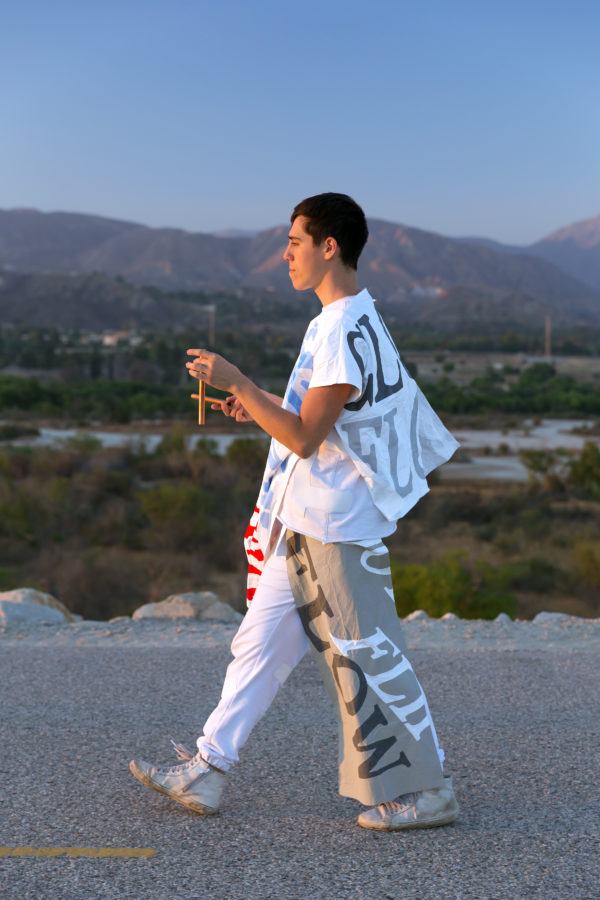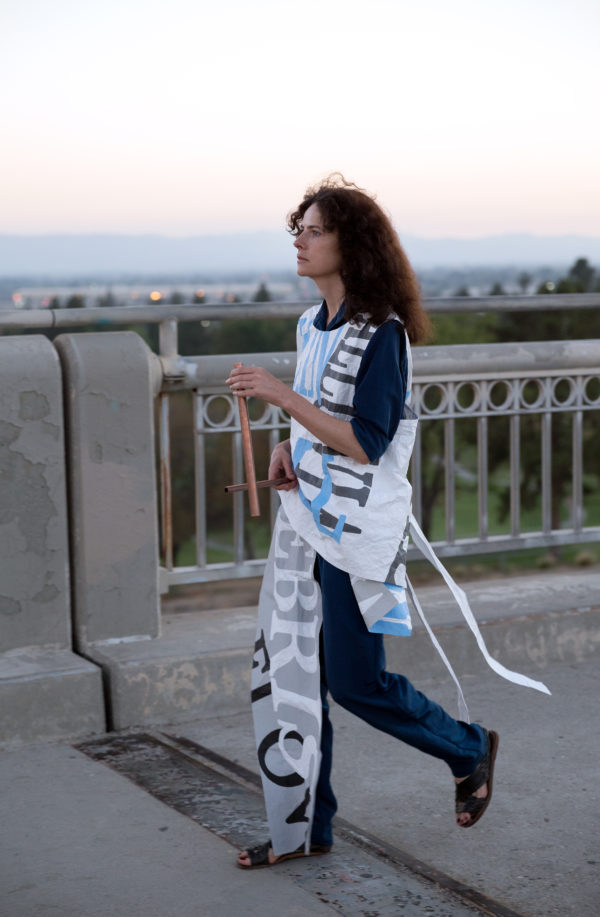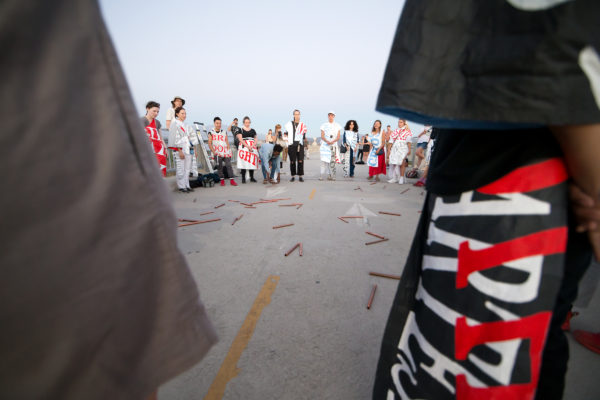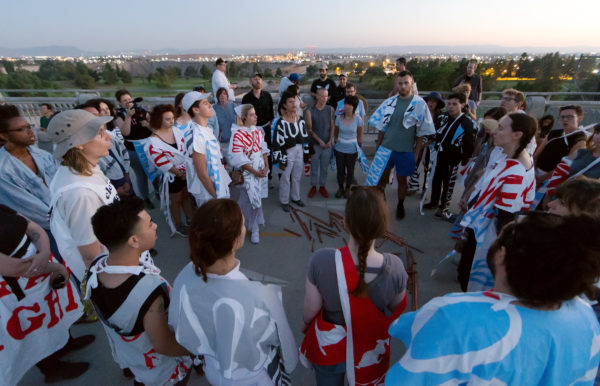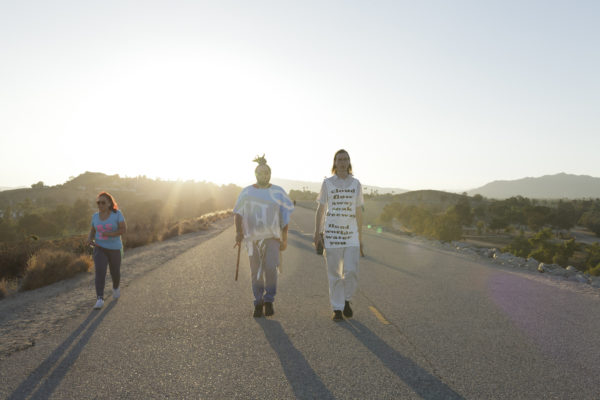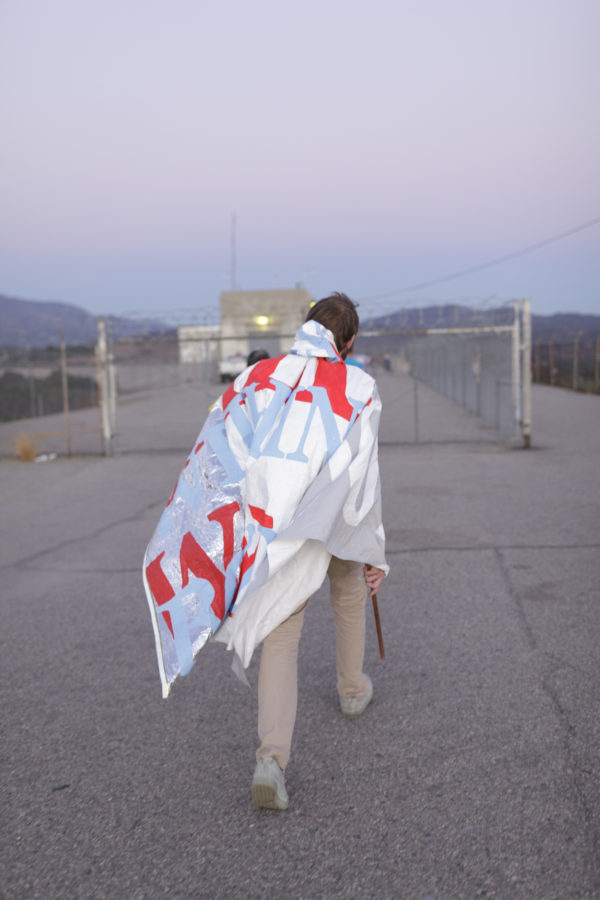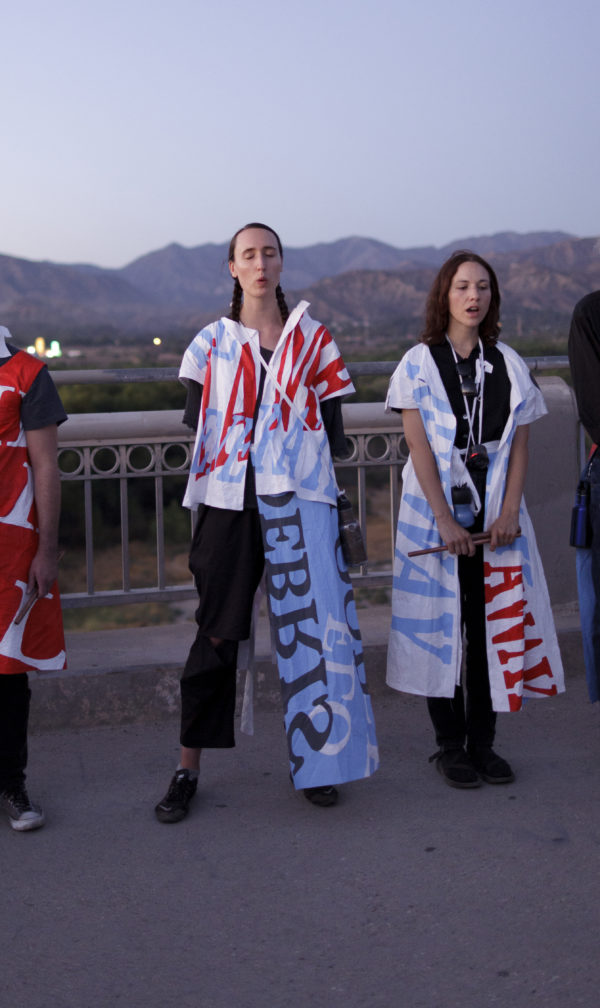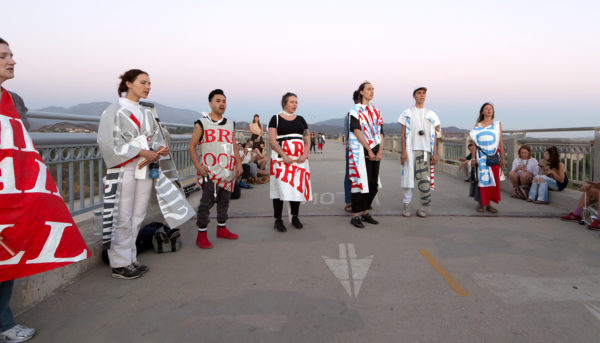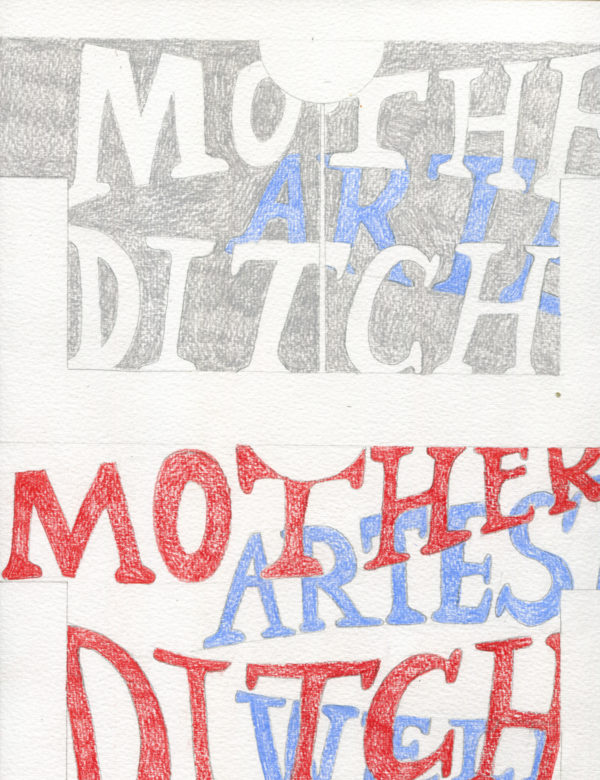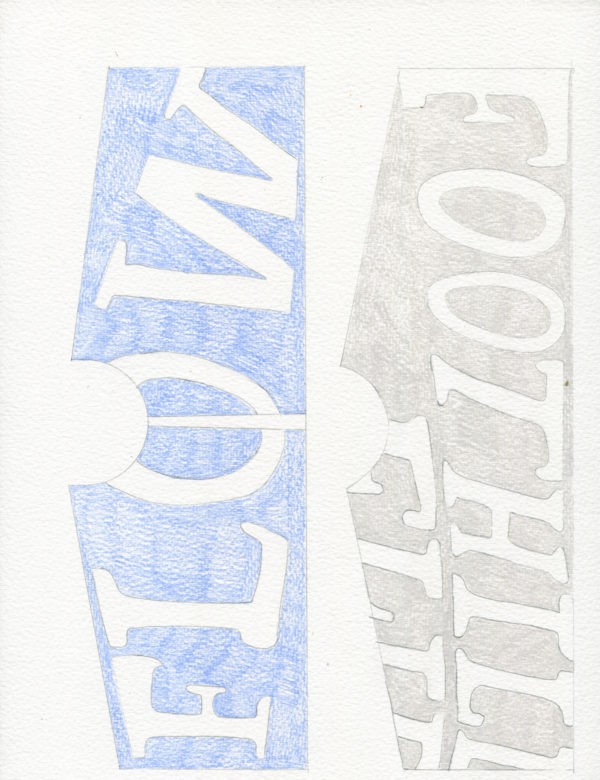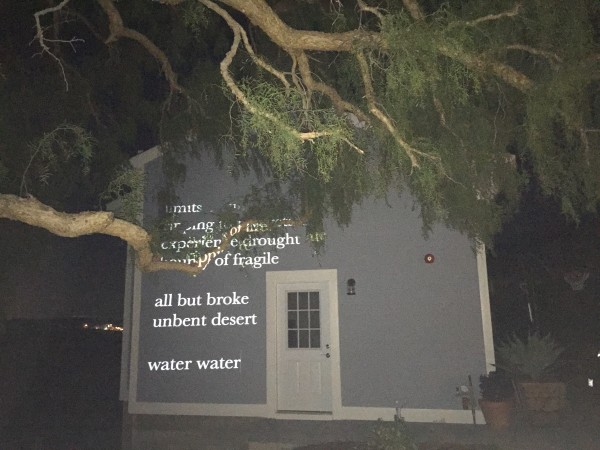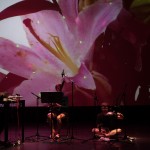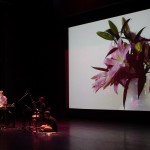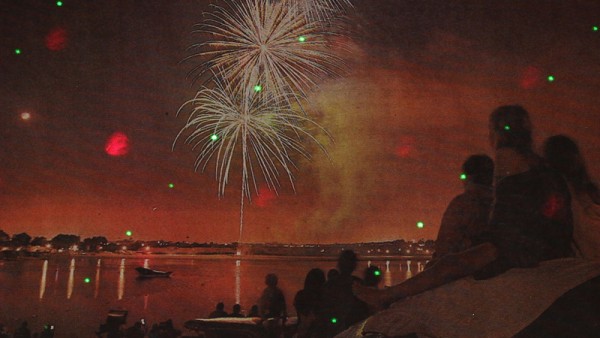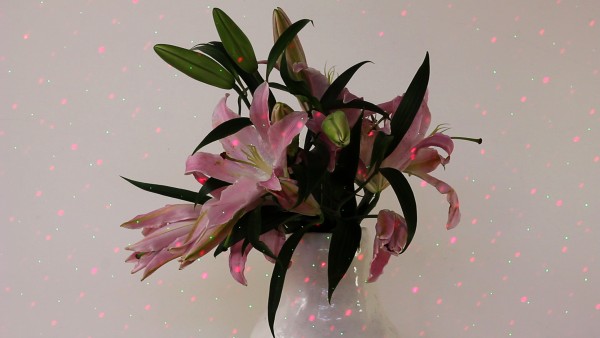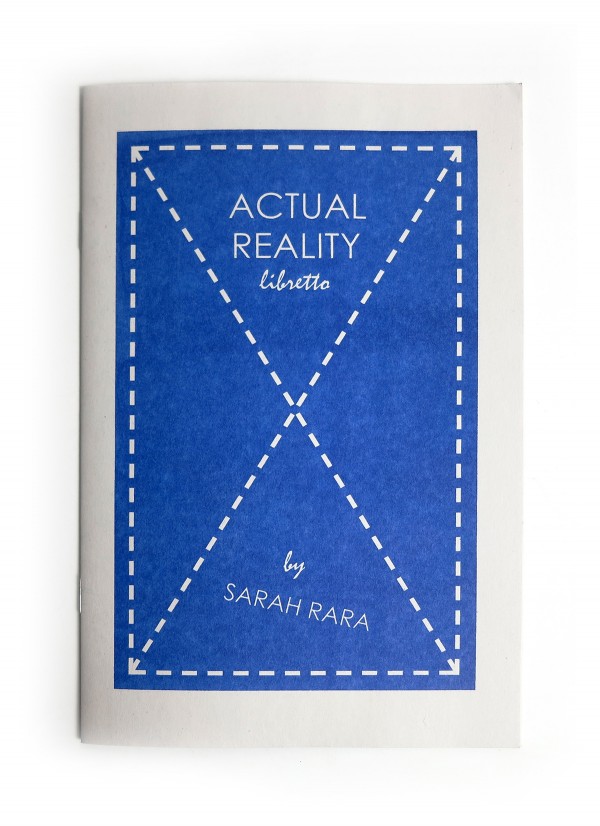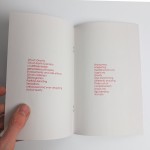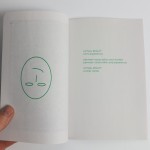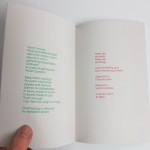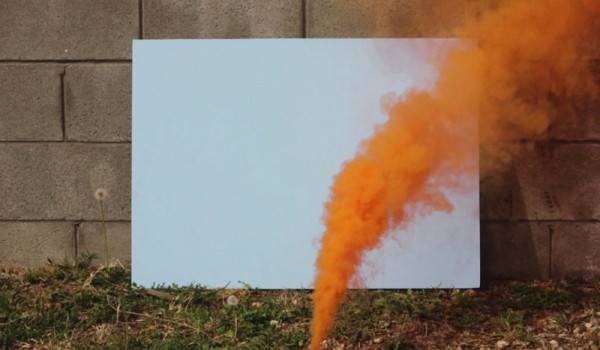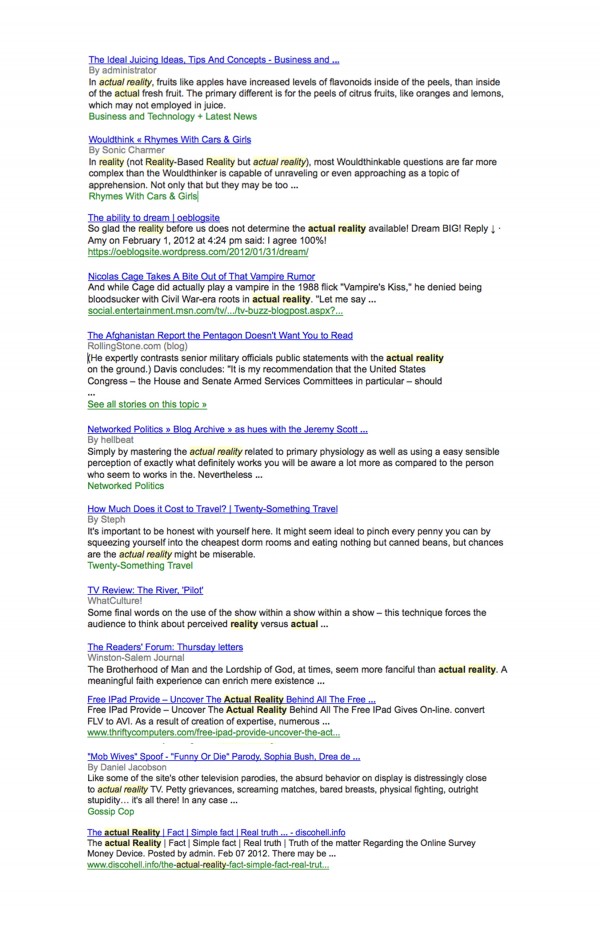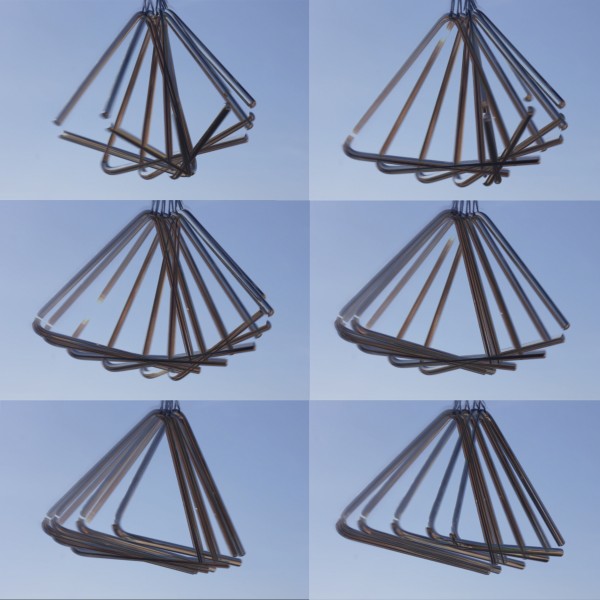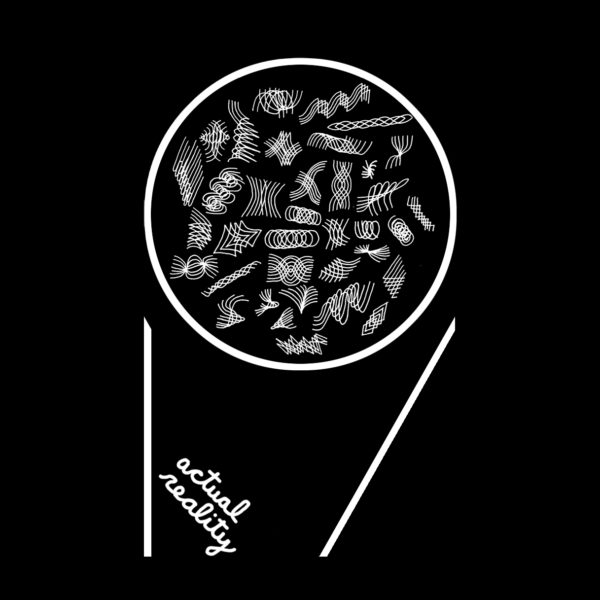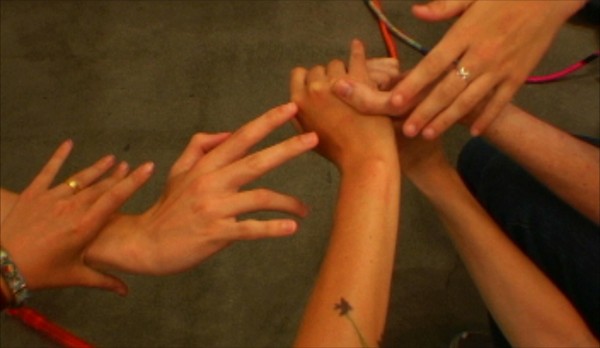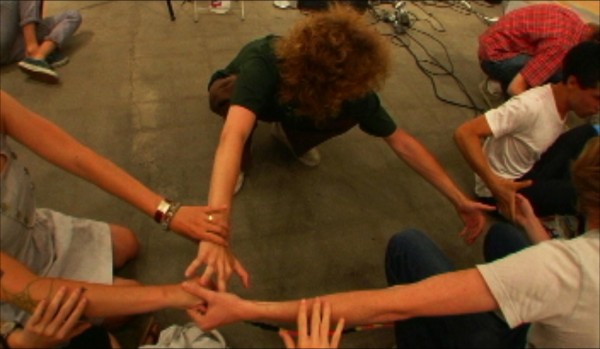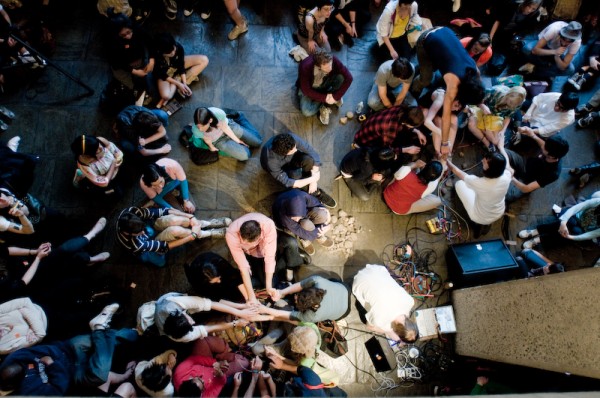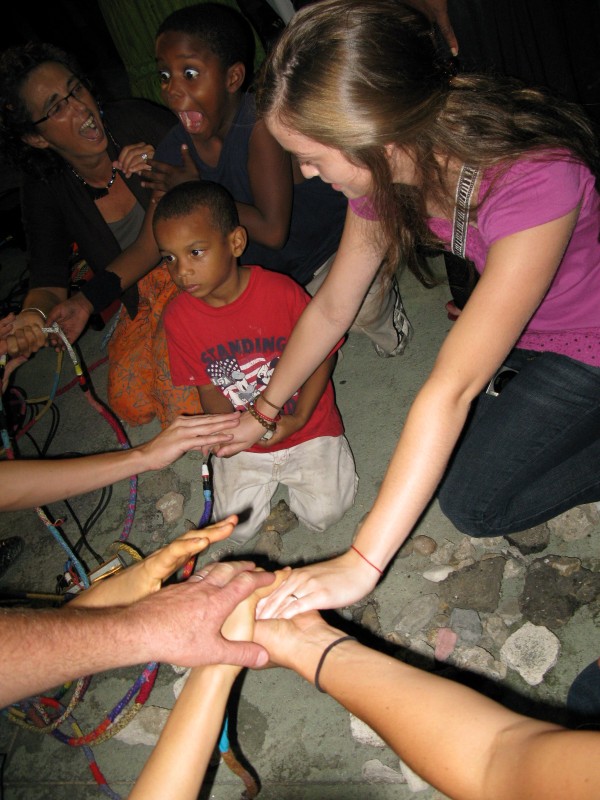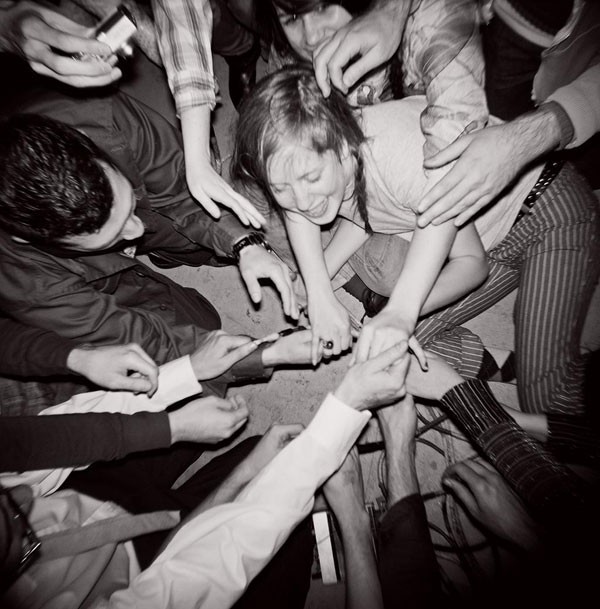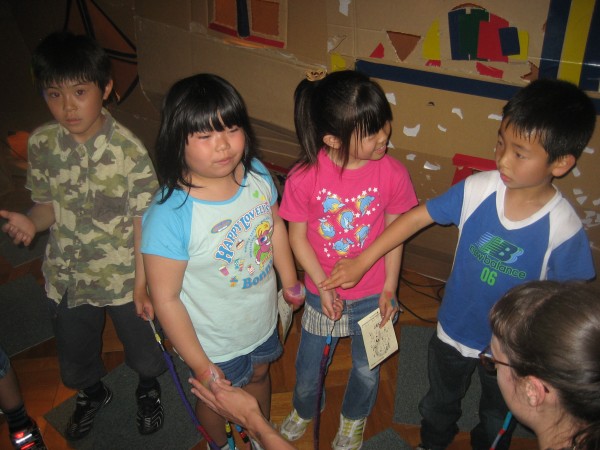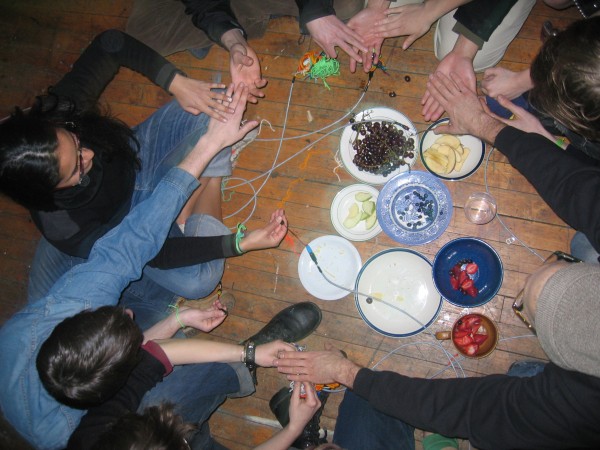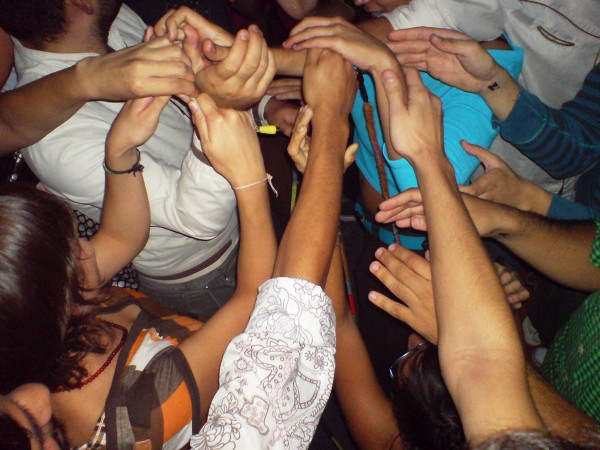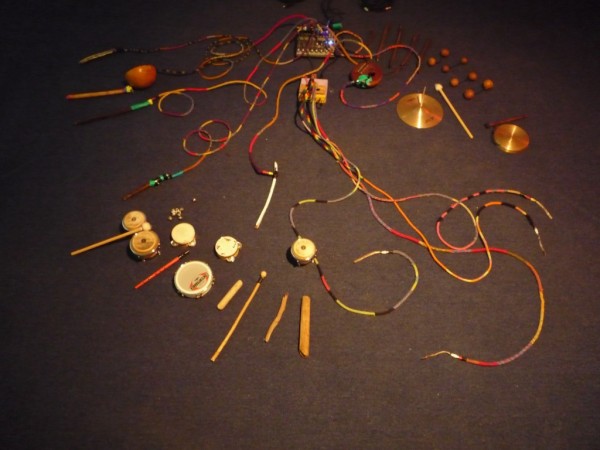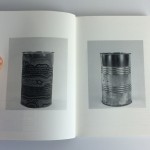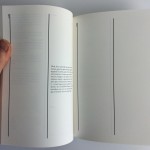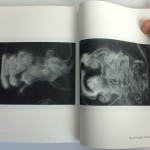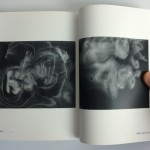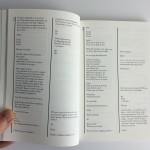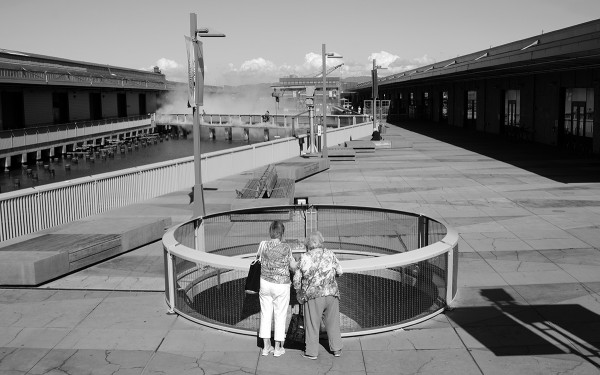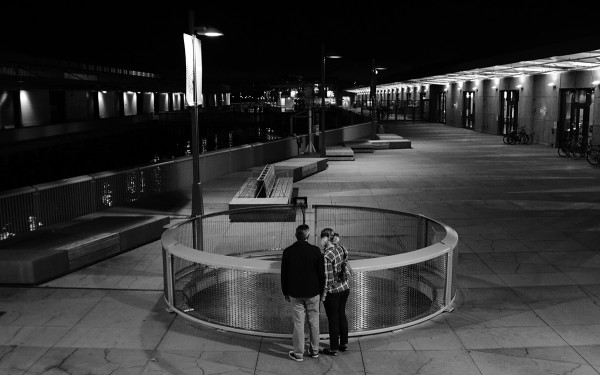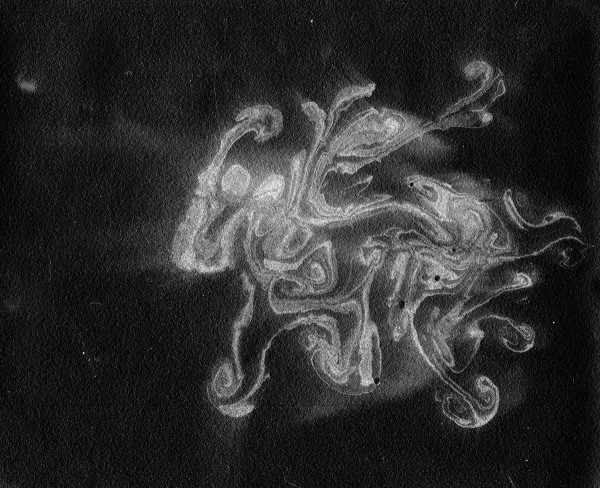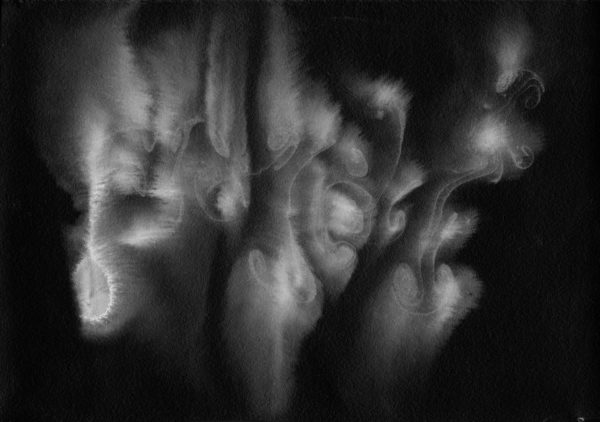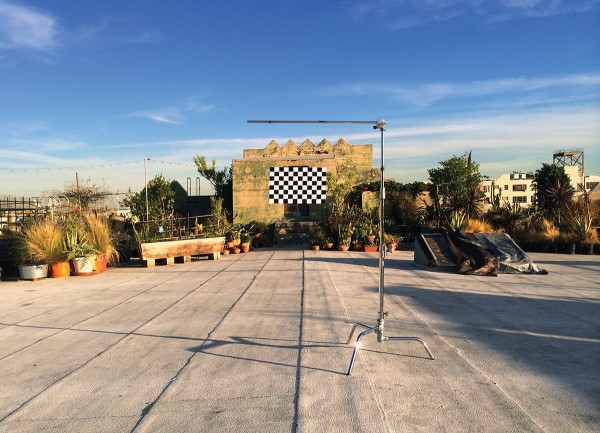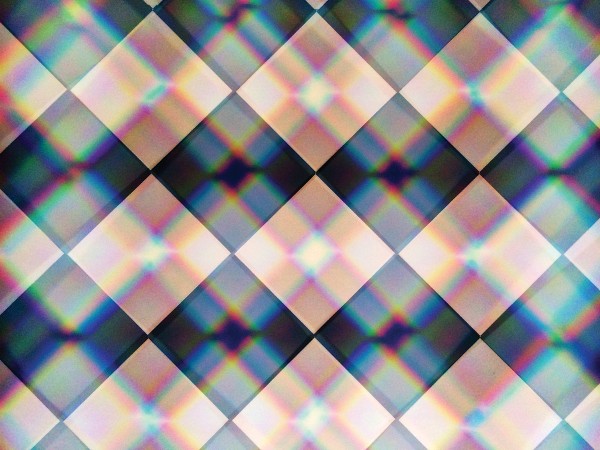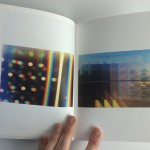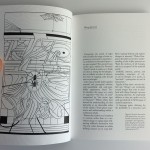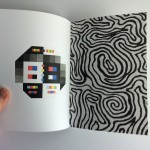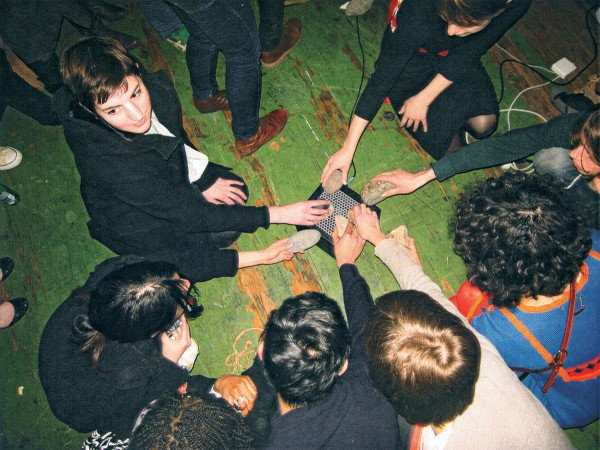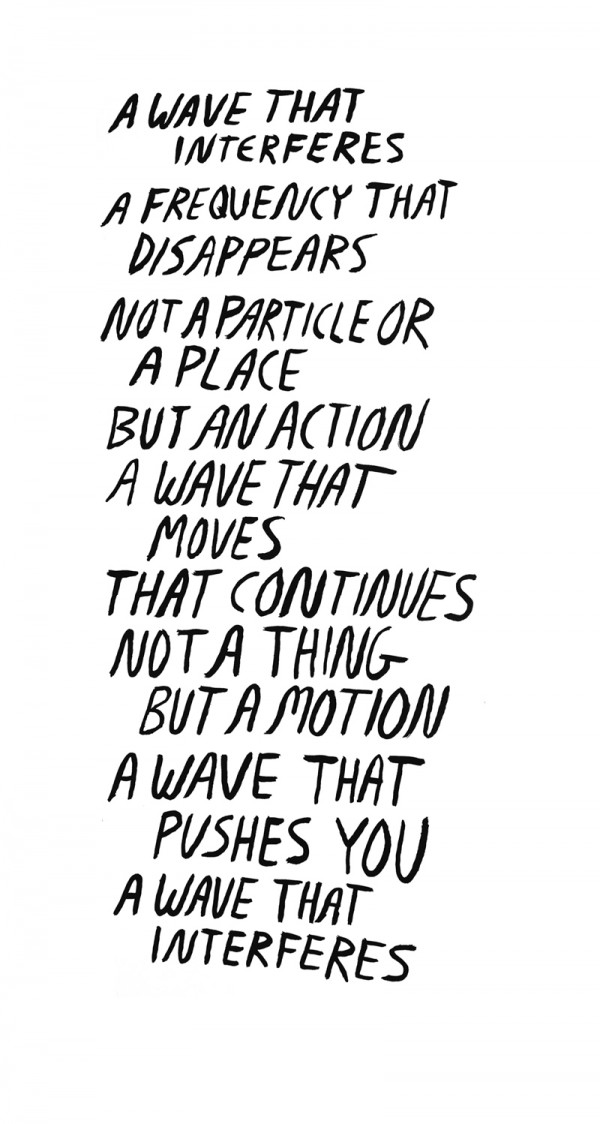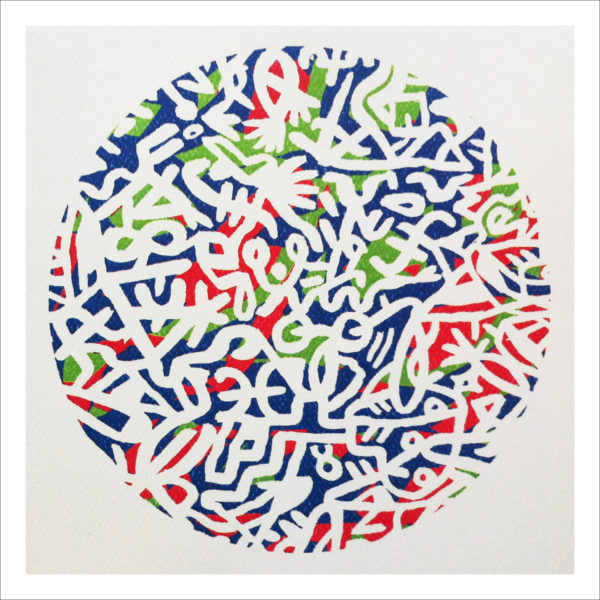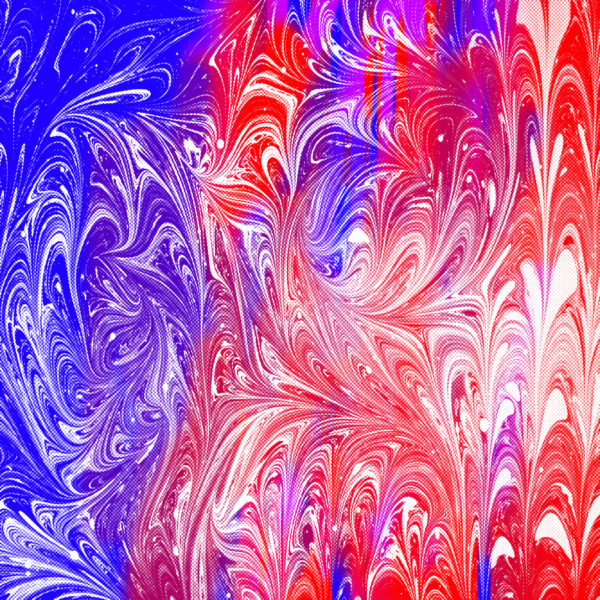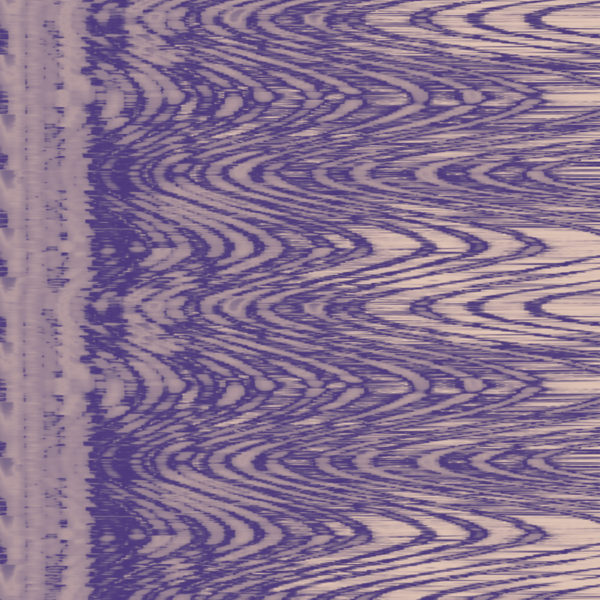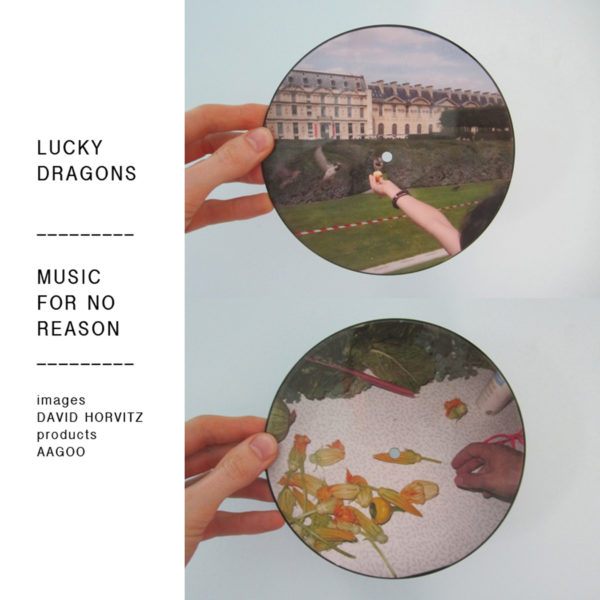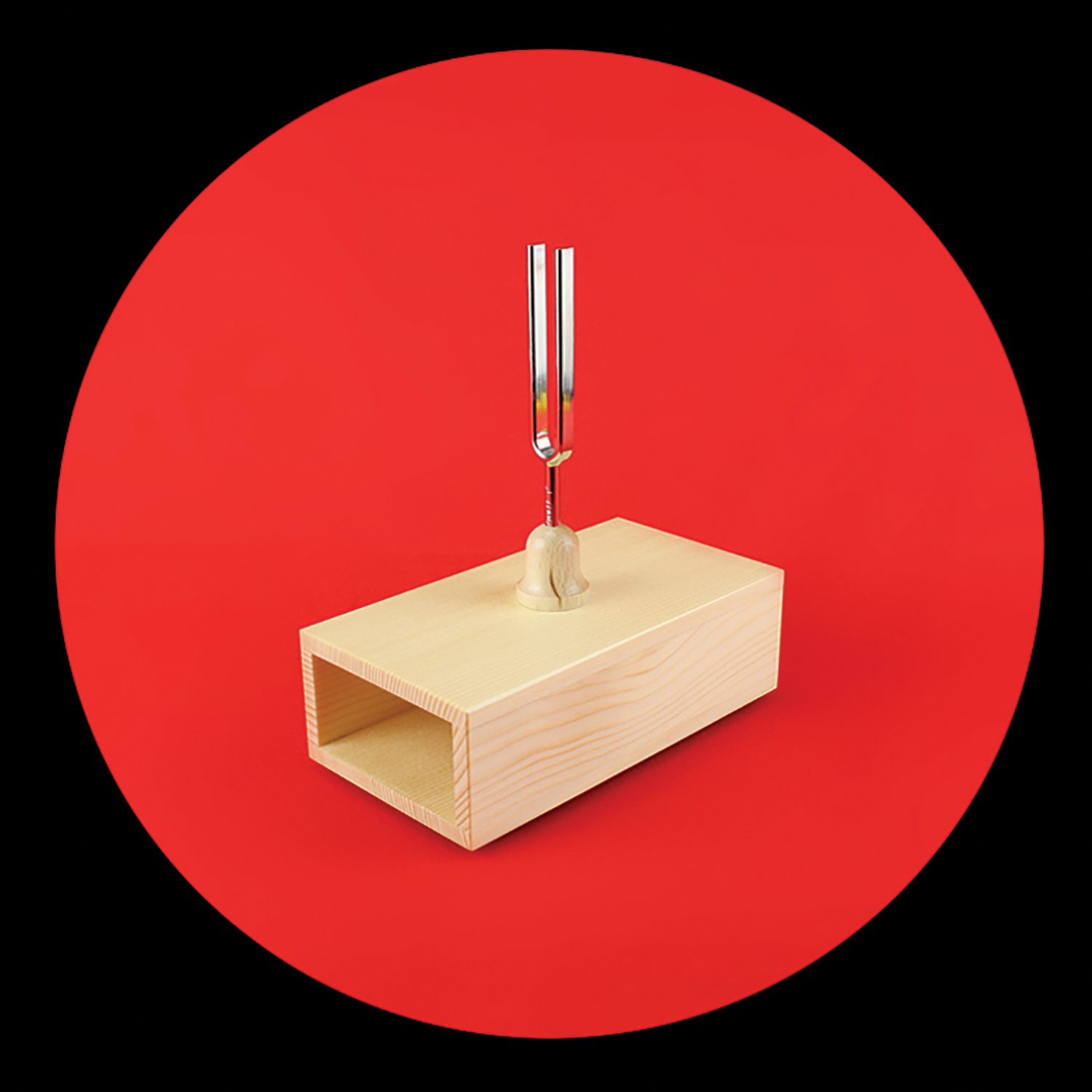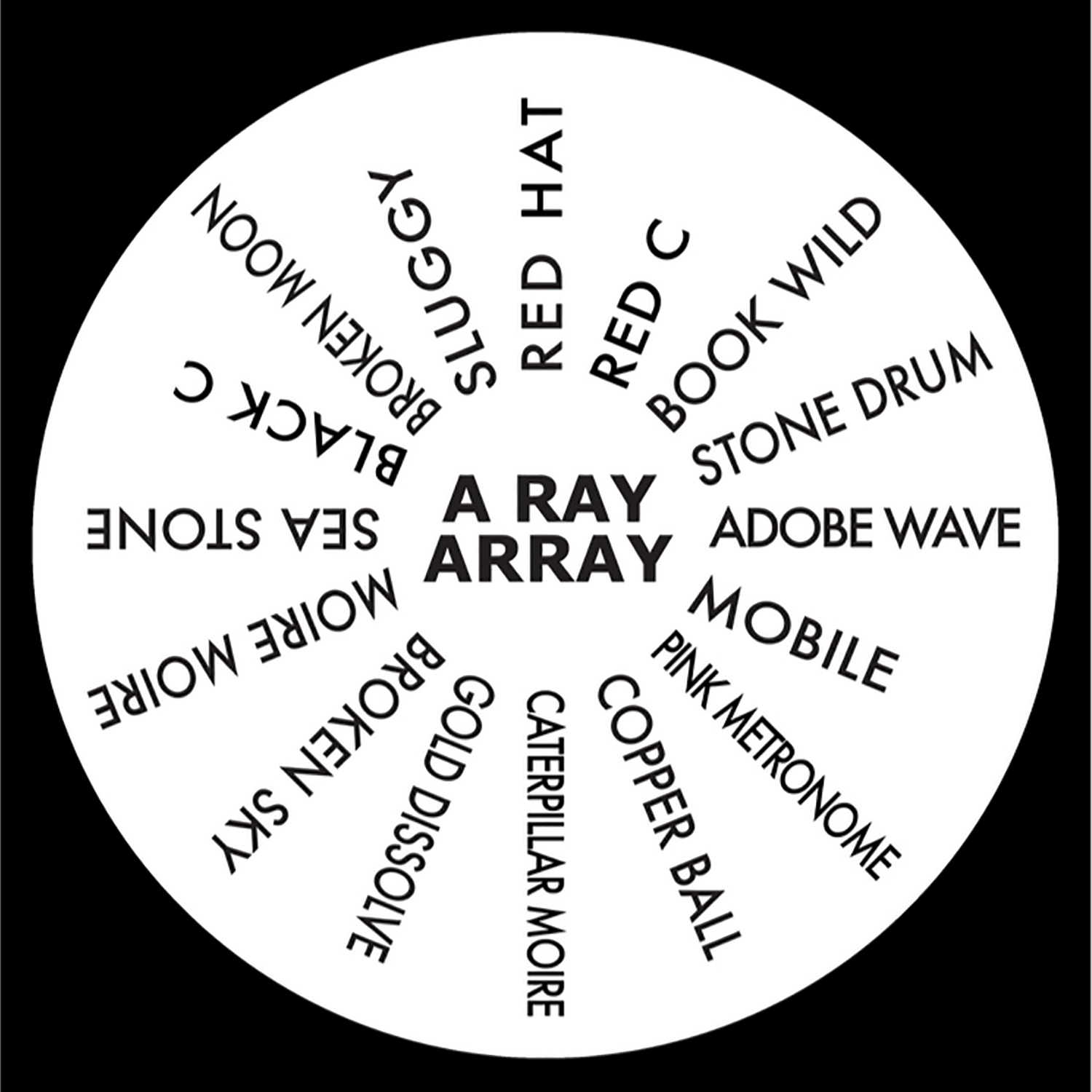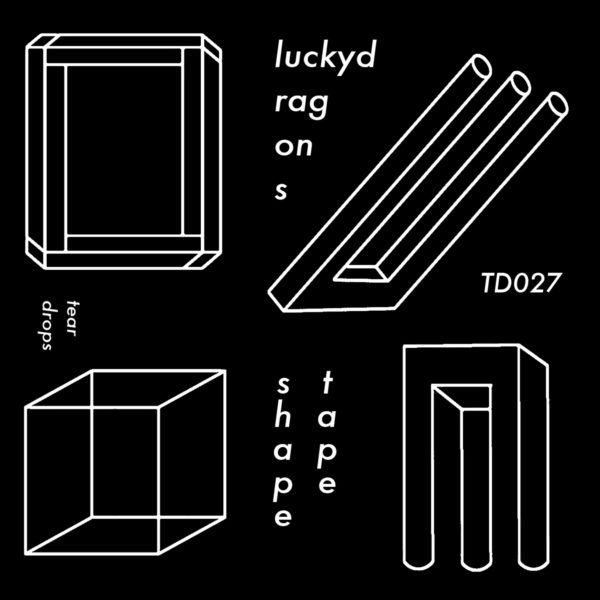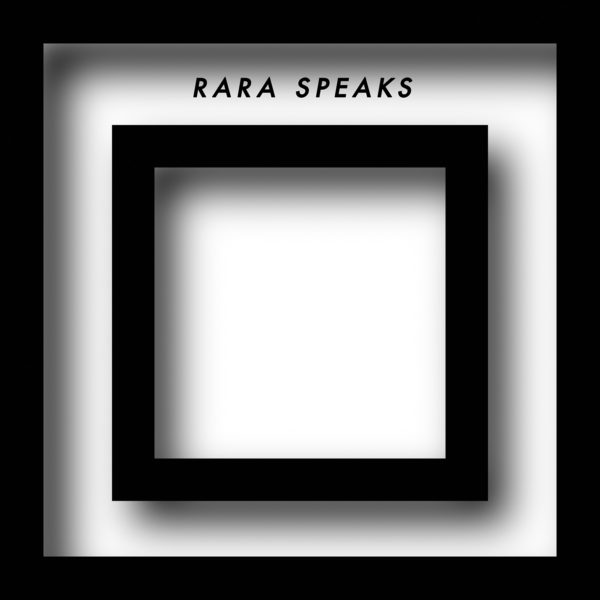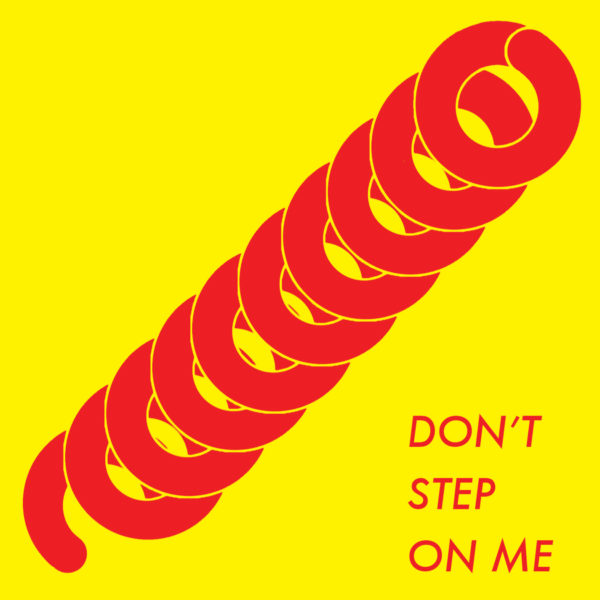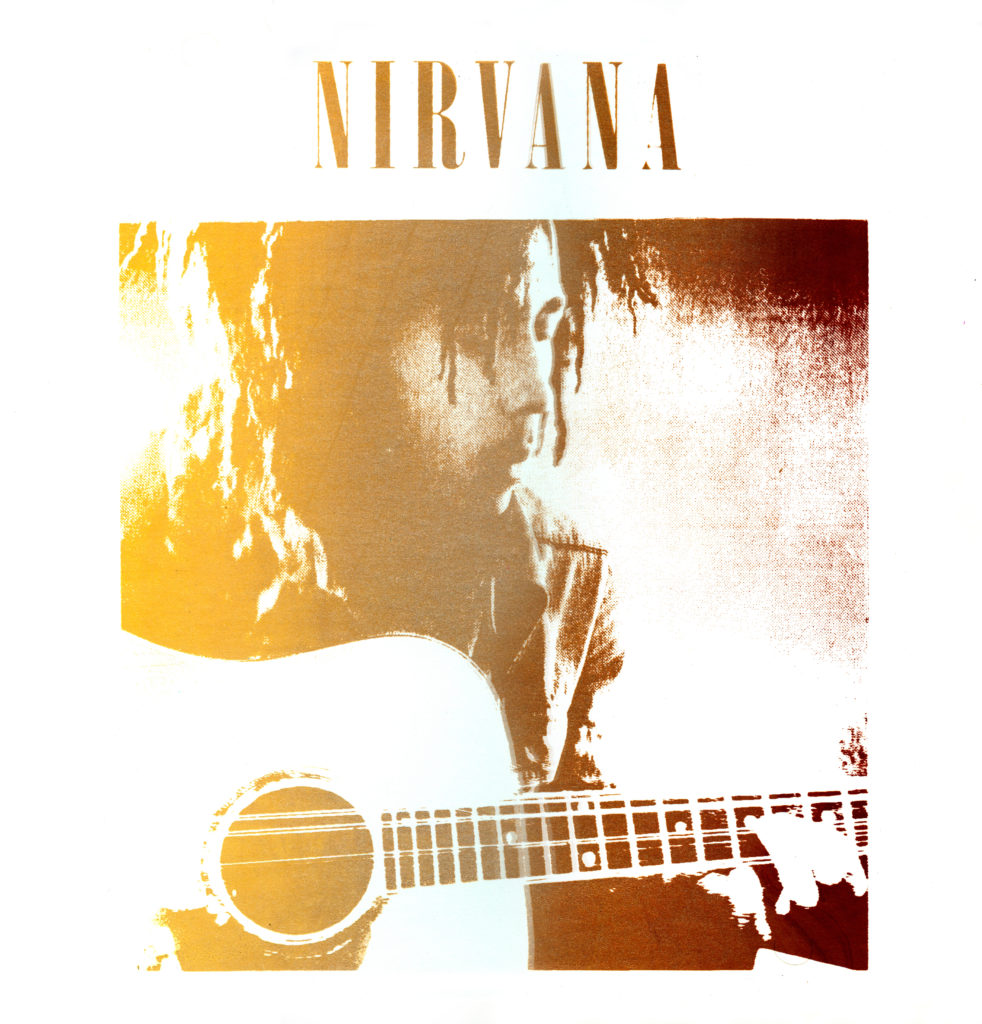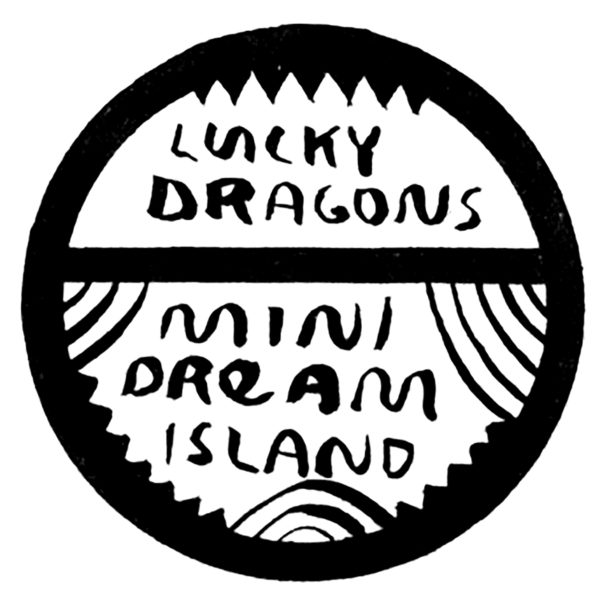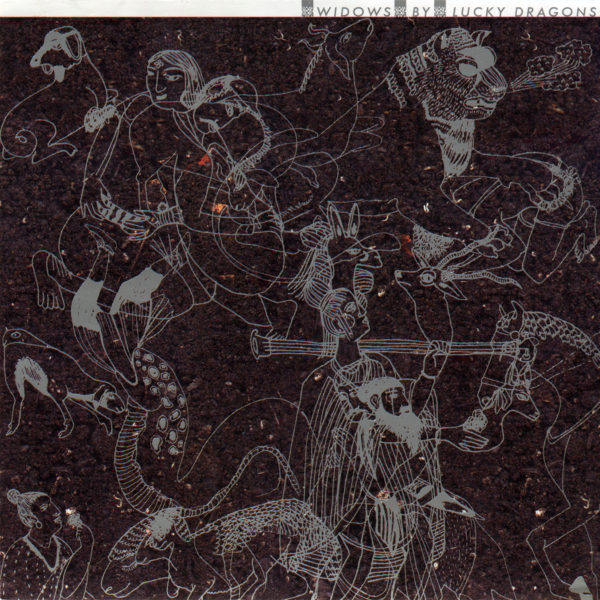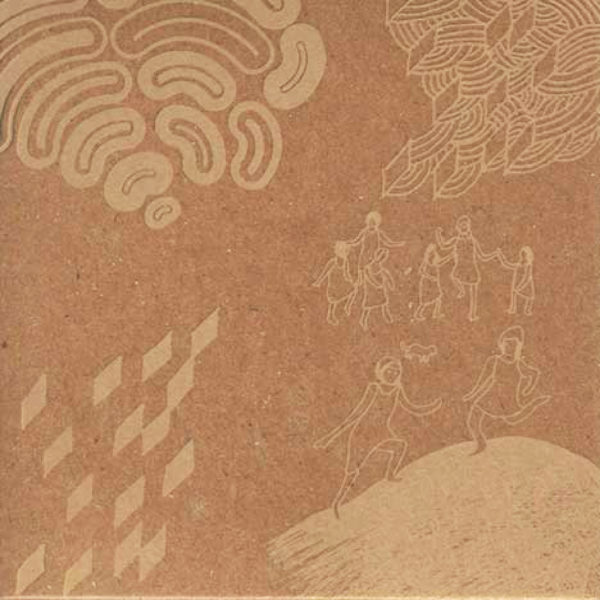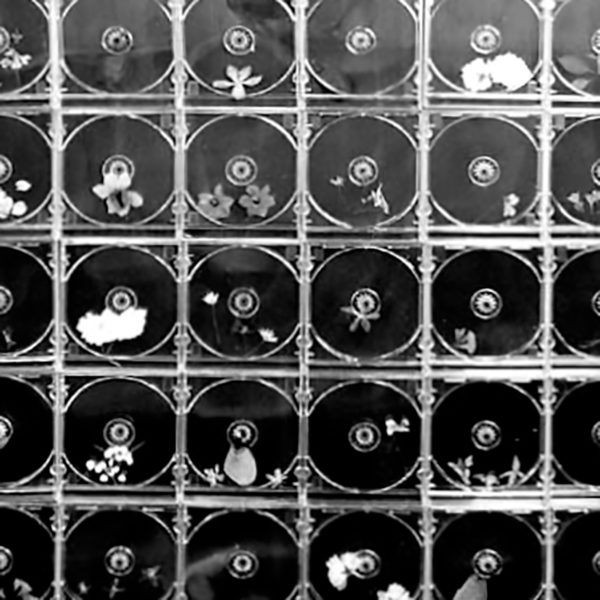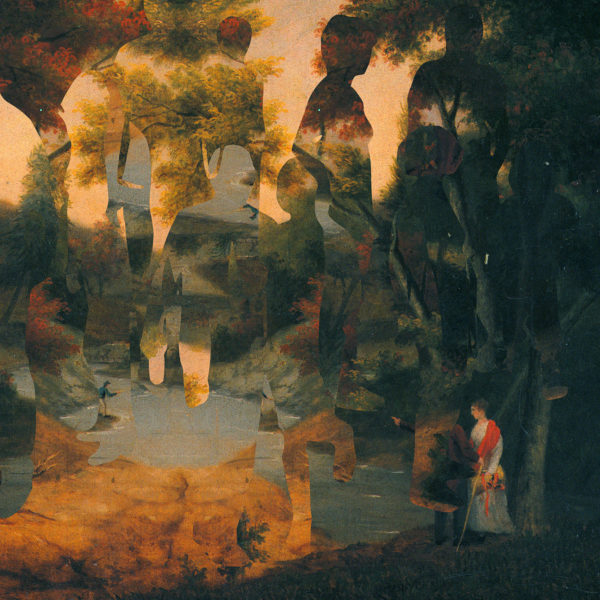Music that speaks to the theme of ‘nonspace’—where a provisional, variable structure is used as a frame for what is uncertain, inaccessible or unknowable; where sound may fill a space without occupying it. The audience, provided with wireless headsets, find the piece in multiple simultaneous ways, as they may choose: by listening directly to acoustic events happening in the space, or by selecting one of three different live-broadcast, processed versions of these events. Whether choosing to hear sounds directly, indirectly, or to avoid hearing altogether, listening becomes a way of extending what can be seen or experienced directly, collapsing foreground and background, interior and exterior, public and private. (a sample mix is included below)
As If Ears Were Hands
I do not distinguish between ears and hands. First I listen for cause and effect: What made the air take that shape? And then I drift. I drift from room to room and I listen for cause and effect.
And when I drift from listening for cause and effect to listening for the wave itself, the sound could be voices or stones it doesn’t matter. A grain, a texture, a quality moves to the front. One form of information dominates another and suppresses another. The sound is a carrier wave. The wave that carries. I have to ask it a question to get a response. What forms of listening might lie dormant between listening for cause and effect, and listening for the wave that carries?
As signals mix the ear multiplies itself. As one thing follows another, I become a moon orbiting a sound. Absorbing and reflecting. When I produce a sound, the sound extends from me attached by a thin wire. With this wire the sound can be reeled back in—inhaled—or captured by someone else, and then easily traced back to me. If I bounce a sound off the moon, I’ve drawn a wire that tethers me to the moon. To disengage myself I would have to pass the sound to another listener or be trapped forever between the sound and the moon, held by wire.
I don’t own any sound, although I’ve tried. Because I’m always trying to increase my property. And my ears are very active. But released into common air space a sound belongs to no one. When it travels fast, it can never be verified. It can never be held. It can never be exchanged. The ear can’t hold repetition, really. The listener adds emphasis: to listen is to insist. Sound is only a change in air pressure, trace the way it moves with touch, with pressure.
Inside the ear there exist a series of high-pressure chambers. For this piece I had wanted to propose a tube where sounds could travel from distant past to distant future—but I couldn’t figure out how to construct the tube nor could I remember the fact that it already exists, that I carried this tube around inside my ear every moment whether I made use of it or not.
In order to use sound effectively it’s necessary to recognize that sound deceives continually. One sound evokes innumerable readings. when it comes to listening there are no laws or rules. The aim is develop—through experience, trial and error—hands for sound so that the ear can be free. An earful is a handful. What counts here—first and last—is not so called facts but listening. Listening insists on fantasy and imagination, a place for a mind to balance.
This way of searching leads to awareness of the interdependencies within sound, between form and place, with quantity, repetition, recurrence, quality, intensity, and pronouncement, by separating and connecting boundaries.
If 50 people are listening then a single sound has become 50 sounds. it can be expected that there are 50 sounds in their minds and one can be sure that each of these sounds will be very different.
A dog orbits her familiar like a moon. A dog has velvet ears that sounds love to touch. The human ear is a windy road to travel, the flesh is rubbery. Not all sounds are willing to undertake such an odd journey. We lose some high frequencies along the way, as we troll the air with ears like a net, catching sounds to feast on, like a fisherwoman.
Once, due to illness, my ear shut off both channels to the outside world. In times of extreme austerity or deprivation one makes odd facsimiles of what one desires out of available materials. The ear makes its own sounds, tones like sine waves alternating with transient noise in tints and shades. It hurts to hear these sounds, issued from the ear itself; sounds from the outside world are much more gentle. To listen to the ear in itself is to be caught in a labyrinth that can cause one to lose balance and fall down, down, down, into a hole carved in wax. A friend moved to a quiet town near the ocean where the coastline is pristine undeveloped and wild. The main street of the town has just a few businesses. There’s good food and clean air. I asked him if it was quiet up there, he said yes but the noise in his head was just as loud; now I understand.
Because of the character of these studies, there is no opportunity to decorate or illustrate, to represent (or to express) one’s self (or anything else). These sounds can’t be misread, misunderstood, or disproven. They can only understand the principles at work in the materials to be manipulated by the ears as hands.
I’m surprised to see the sculptures at rest, because for the sculpture to be at rest, the air must be at rest, and the air should never be at rest. If the air is at rest then the message can’t travel. Air at rest lacks language. Air at rest leads to silence or it leads to forgetting.
Who owns non-space? Drawing a frame around what is uncertain, inaccessible, unknowable—holding what can’t be held. Sound can fill a space without occupying it. Sound can be a guest but not a host. Sound doesn’t claim territory—though it may define it. Sound isn’t fixed. Sound flows at the center and reflects at the edges. You may choose to hear a sound directly, but you’ll have to approach me and stand close to me, because the sound follows my body around, I can’t help it. Listening extends beyond what is present, it folds in the imaginary. Listening extends what can be experienced directly. Sound is physical and concrete, but listening is fantasy.
Collapse foreground and background, collapse interior and exterior, collapse public and private.
Following and drawing: when I drift away from listening to causes and effects, the sounds could be anything. Voices speaking, stones falling, paper rustling, sticks snapping, glass touching, leaves falling, air conditioning, it doesn’t matter. A grain, a texture, a quality moves to the front, one form of information dominates another and suppresses another. The sound is a carrier wave, I have to ask it a question to get a response.
Wherever sound moves into the room there is a new source, a new event. Listening along walls and doors to find sources and events. I stepped back into the doorway for a moment to clear my mind, and then I began to really listen. To decompose the typical mixture of sounds that we encounter in everyday life, allowing our brains to form separate mental descriptions of the individual sounds in the mixture.
I might not be there; if I pushed my hand between elements, or through a hole, the hand would disappear. An echo has already anticipated it, and described the experience as if nothing were taking place in this space before. The future was finally falling in on me. Two of the walls are the cliff it was built against. In the moonlight it could have been part of a hill—both itself and something more. How objective can I be?
After a while my ears are so dazzled and concentrated that I cease even to listen anymore, and it is as though my ears literally and actually reach out feel things, as if ears were hands.
Is silence like a garbled noise, or a stillness, hanging out into space? Either way, an interruption. Hands gently waving their various arms at me in the air. A jumbled confusion of color and line.
Do I need access to a quiet space to read, meditate, regroup thoughts? What are some differences between ears and hands? What caused the air to take this shape? Could the sound be voices or stones? Does it matter? What does “lying dormant” mean? When signals mix, does the ear multiply itself? Does the moon orbit a sound? What absorbs and what reflects? Would I produce a sound? Would I trace it back to me?
When I bounce sound off of the moon, I draw a metaphorical wire that connects me to the moon. To disconnect myself, I need to pass this sound to another listener, or I’ll be trapped forever between sound and the moon.
I can’t help it. Listeners are particular and concrete. Physical, symbolic, textural, temporal, spectral. They describe instantaneous events, temporary states, and processes that evolve over time, comparing new to remembered. A changeable frame of reference, a window with an unusual and unstable shape. Empowering constraints. To listen is to insist.
Can I expect anyone to have 50 sounds in their mind? Can I be sure that each of these sounds will be very different? Is a dog like the moon? Why do sounds love to touch a dog’s velvet ears? What sounds do I catch with ears like a net? Am I surprised to see the sculptures at rest? Is sound a guest or a host? Which is foreground and which is background? Can I make a drawing with sound?
Following and drawing: I can’t distinguish between ears and hands. First I listen for causes and then I listen for effects: What makes the air take this or that shape? And when I drift, I drift from room to room, between interior and exterior, between public and private. And I listen for causes and I listen for effects.
Signals mix in the ear and the ear multiplies itself. One thing follows another, and I become a moon, orbiting a sound, absorbing and reflecting. Each sound that I produce extends from me like a long thin wire. Each sound that I produce can easily be traced back to me. If I bounce a sound off of the moon, I’ve drawn a line that ties me to the moon. To cut the line I would have to pass the sound to another listener or I’d be trapped forever between the sound and the moon.
I don’t own any sounds, although I’ve tried. I’m always trying to increase my property. And my ears are very active. But released into common air, a sound doesn’t belong to anyone. It can’t be verified, because it travels so fast. It can’t ever be held and it can’t ever be exchanged. The ear really can’t hold repetition, really. The listener adds emphasis every time. To listen is to insist. Sound is a change in air pressure, trace it as it moves, with touch, with pressure.
Inside the ear are a series of high-pressure tubes. For this piece I wanted to make a kind of tube where sounds could travel from distant past to distant future—but I couldn’t figure out how to make this tube and I completely forgot that these kinds of tubes already exist anyways and that I carry them around inside my ear every moment, whether I am using them or not.
Sound deceives continually. Or, one sound evokes many readings: If 50 people are listening, then a single sound has become 50 sounds. And for each of these 50 listeners there are 50 sounds in each of their minds, and I can be sure that each of these sounds will be different.
And when I drift from listening for causes and effects to listening for the wave itself, the sound could be voices or stones or people or things it doesn’t matter. A grain, a texture, a quality takes over. One form of information dominates another and suppresses another. This sound is a carrier wave. The wave that carries. I ask it questions and I get responses. What shapes of listening lie dormant between listening for causes and listening for effects, and listening for the wave that carries?
When it comes to listening there is no framework, no rule of law. The aim is develop—through experience, trial and error—hands, gently waving their various arms at me in the air: hands for listening, so the ears can be free. What counts now—and always—is not the forming of facts but the forming of listeners. To listen is to insist on fantasy and imagination, a place for a mind to balance.
As If Ears Were Hands
Every Noun Until Any Now
EVERY NOUN UNTIL ANY NOW is a poem composed of five hundred bronze bells, each containing a single word. The poem is sounded out by more than one person, striking one bell against another. Each word has its own tone. There is no complete poem here, only possible combinations of words and tones and ways of striking one against another. The entire set of bells was handed out on the corner of 1st street and Grand Avenue in Los Angeles at midnight, to a mixture of audience exiting Walt Disney Concert Hall and those who happened to be passing by at the time. The shape of the piece is to ring and disperse. Commissioned by Los Angeles Philharmonic.
M.O.S.
M.O.S. means:
motor only shot
mit out sprechen
mit out sound
missing optical sound
most obvious solution
motion on screen
movement opposite sound
multiple occurence schema
myth of sequence
mental open screen
my oscillating story
may otherwise suggest
mind outlines speech
meaning or sign
might over-simplify
memory output system
matter of sync
mockup of situation
mirrors original sample
M.O.S.

All night, we record sounds at the open air cinema. The recordings are compressed and expanded (not quite the right way) with the spectrum blurred, a harmonic echo. All the next day we play the blurred sounds back into the open air cinema (an example below). The title “M.O.S.” is taken from a term (with no certain origin) used to indicate an image filmed without synchronous audio track.
Presented as part of the Hallucinations program organized by filmmaker Ben Russell as part of Documenta 14 in Athens, Greece..
Find By Image
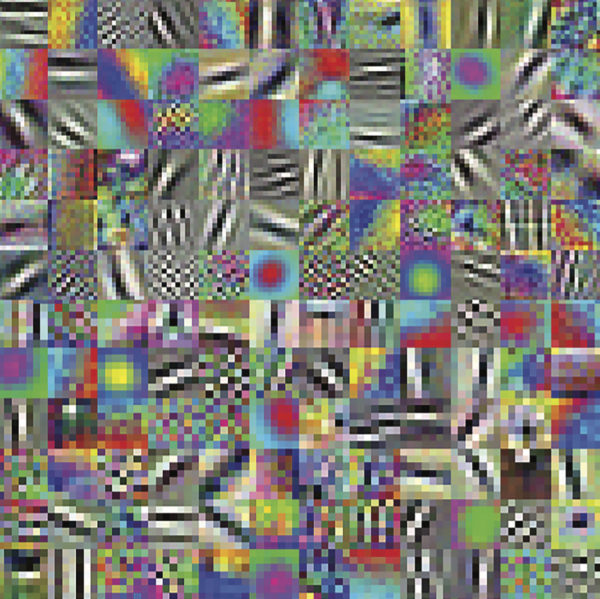
Find By Image: Machine Learning for Artists
Studio-based course introducing the field of machine learning to artists, designers and performers. The goal of this course is to unpack and familiarize ourselves with available machine learning tools, which we use to plan and produce works of art. In-class labs open a preliminary investigation into the conceptual and technical underpinnings of key machine learning methods, exploring their application through hands-on coding exercises. Readings and discussions will attempt to connect the theory, practice, and poetics of machine learning, and to place our efforts into wider ethical, social, philosophical, and art-historical contexts. In the process, we will expand on the general phenomena of learning, experience, and creativity as subject matters in themselves.
View full syllabus / course website here ↗
Topics In Interactivity And Games: Empathy And Memory
Topics In Interactivity And Games: Empathy And Memory
A studio-based class taught in the Design | Media Arts program at UCLA, working alongside the Center For the Art of Performance’s CODA project to create new media artworks using data sourced from performance—including video, images, audience surveys and biometrics (heart rate, EEG signals, etc.), to explore how audience interaction / engagement with performance contributes to the formation of memory and empathy.
View full syllabus and course website here ↗
The Open Score Workshop
The Open Score Workshop
A hands-on, collaborative research group that explores the use of “scores” across disciplines as experimental, descriptive, and performative devices. A “score” is a form of composition, and a way of communicating processes over time using language or symbols to define events. Scoring as a creative, generative process, is not limited to any one field, media, or genre. The workshop has two central components:
Part 1:
Performing and evaluating historical scores, in order to gain pragmatic insight into some of the fundamental strategies and effects of scoring. There are infinite new methods to be discovered among the wide variety of approaches to scoring.
Part 2:
Generating new scores. Each participant, instructors and students alike, practices regularly creating and revising original scores, generating a score every two days to form a collection of “48 Hour Scores” that accumulates over the course of the workshop. Each participant selects two of their scores to be performed and evaluated by the group.
Beyond Majority Rule
Beyond Majority Rule began by surveying how non-hierarchical groups make decisions, with a particular curiosity as to how groups structured against representation might decide to visually or symbolically represent themselves and their common experience. The results, fictionalized and composited, point to a domain where to be represented means to be recognized—where collective memory and decision-making can be understood as forms of image recognition. Transitional and intermediate, these are images used in the way words are used when spoken, described in the way shadows describe the objects that cast them.
View / Download as PDF (37.6 MB)
Get physical copy from publisher
Dream Island Laughing Language – booklet
View / Download as PDF (45 MB)
visionreport
In a series of demonstrations, sounds are transcribed as visual reports: Hands sketch quick graphic notation alongside computer-generated patterns—rendered strokes, torn forms, the alignment of colors and edges—to link the action of listening with the action of seeing. Layer by layer, techniques and metaphors for direct and computer-aided sensation are added. Translation and interpretation are made ambiguous, flickering between human and algorithmic observation; the activities of recognizing, modelling, and predicting viewed as musical forms.
visionreport – video drawing – excerpt
Pencil lines drawn free-hand, ambiguous shapes that may resemble letters or numbers, each figure analyzed while in the process of being drawn. Probable future routes, indicated by fine, branching lines, render the set of all recognizable forms that each shape’s particular ambiguity might allow. When the pencil lifts, predictions continue—lines spread, curve, and overlap, reaching to suggest a new course.
visionreport – waves
An image of light moving on water, shifting from frame to frame. For each reflected point of light, a new tone rises and falls, revealing dense melodies in every arrangement of flashes. When the image freezes, a visual pattern persists, and the tones hold their chance harmony, continuing to slowly rise or fall until the image moves again.
visionreport – masks
Cut-paper masks are manipulated on a computer-drawn grid. When a face is revealed, sweeping, low-frequency sounds trigger, and then disperse into static. As masks are added, rotated, overlapped, folded and unfolded, sound returns in subtle variations to describe each moment of recognition—I see faces, this many, here and here and here … right now.
vision report – notation
visionreport – moire
Hands enter the frame, working together to rotate an image, separating it from an identical image on the layer below. As one set of parallel lines rotates against the other, the combined image appears as a moiré pattern: a row of elongated diamond shapes that shorten and multiply. Hands continue to rotate the image, returning through diamonds into long, angular shapes, and finally back to parallel lines. The sound matches the visual illusion—harmonic overtones are gradually added as the image becomes complex, removed as the image returns to simple alignment, and silenced when the lines are offset and blacked out.
Exploitation of Air
A choreographed movement with monaural microphones to create a simulation of stereo. Each breath, each syllable, captured from multiple point sources to capture a poor spherical image—lopsided, with gaps.
THINKING
MADE
THROUGH
WALKING
WHAT MATERIAL
WHAT QUESTION
Performed by Sarah Rara, Tany Ling, Luke Fischbeck, and Jess Basta.
exploitation of air – banner photos
1.
exploitation of air
forced into syllables
made into symbols
2.
air formed into words
stays that way
hardened into spheres
3.
take all ground away
the turning roundness
loved to walk
on the solid crust
from which to raise a house
4.
as long as she won’t
leave the earth
space exists in
the same manner
5.
human after
air never touched
human before
6.
forgetting elements all
things do not have destiny
translating fluid into words
antiphon versicle plainsong
7.
air formed into words
stays that way
hardened into spheres
8.
clearing the opening
walking through what question
what material made thinking
taking note of posture
did she pose
as separate things
carried away
in the same clearing
on the first day of being
the sphere already there
she arrived
saying posing
who traffics air space
9.
exploitation of air
forced into syllables
made into symbols
10.
human after
air never touched
human before
User Agreement – intro
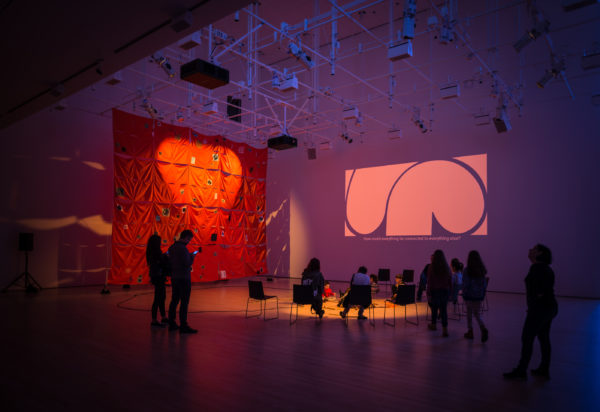
“The people must recognize the defects of the old invention, and someone must make a new one.” – Margaret Mead “Warfare is Only an Invention not a Biological Necessity” (1940)
What can happen in a museum? In 1945, representatives of fifty countries convened in the War Memorial Veterans Building—SFMOMA’s original home—to draft the United Nations Charter, imagining a global system of government designed to produce peace through consolidated power. “User Agreement” is an ongoing artwork centered in research and performance, beginning at SFMOMA with a focused series of performances, installations, workshops and a website, then continuing at 18th Street Art Center in Santa Monica. The purpose of this artwork is to reverse engineer the technologies of peace—treaties, protocols, symbols and systems—in order to learn from what has already been invented, to repurpose and re-contextualize, to create new possibilities for interaction, and to fix existing bugs. Working backwards from the ways peace has been put to use through images, actions, and language, we will unpack and re-imagine techniques of mediation, conflict resolution, and treaty-making as performances, workshops, and interventions. Translated, abstracted, dispersed—the goal is to develop and make available new technologies for peace, conditions for engagement that preserve difference and acknowledge unanswered questions.
User Agreement – treaty scroll
A text archive of historical peace treaties is spelled out and erased, letter by letter. Screen capture of browser-based artwork (an online version is included on SFMOMA’s page for User Agreement).
User Agreement Pamphlets
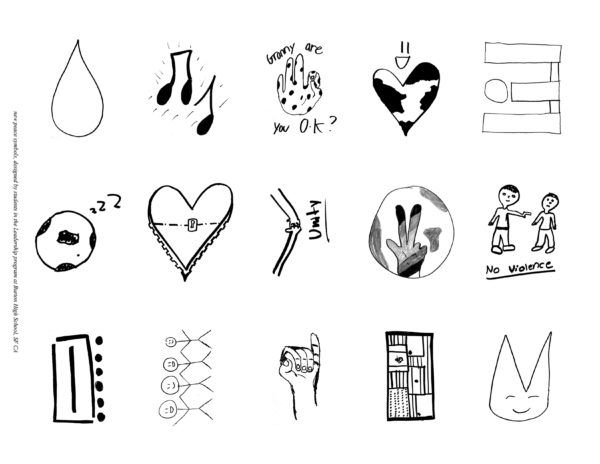 New Peace Symbols (in collaboration with the leadership class for juniors and seniors at Burton High School, San Francisco CA (960 KB)
New Peace Symbols (in collaboration with the leadership class for juniors and seniors at Burton High School, San Francisco CA (960 KB)
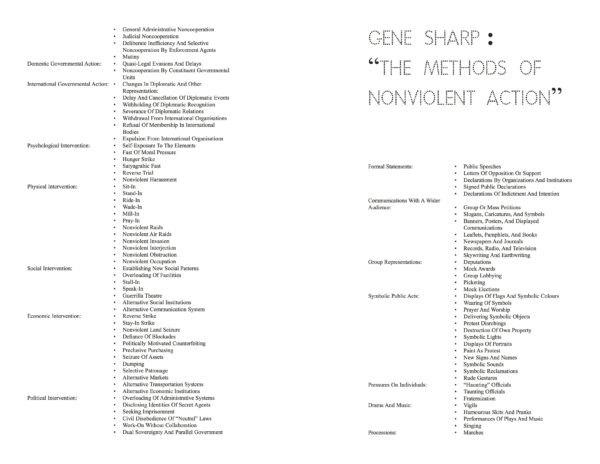 Gene Sharp: The Methods of Nonviolent Action (25 KB)
Gene Sharp: The Methods of Nonviolent Action (25 KB)
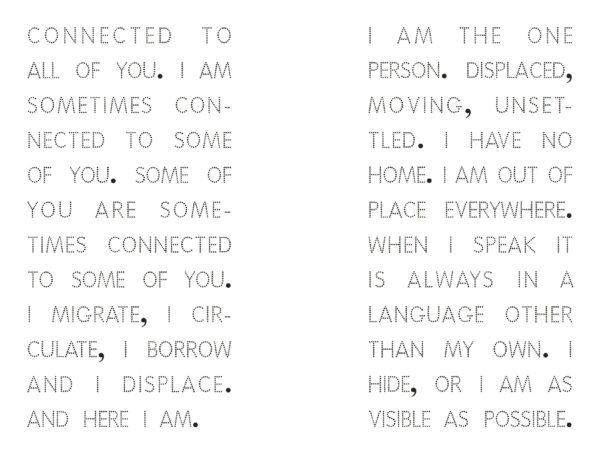 Score for a Group of One (27 KB)
Score for a Group of One (27 KB)
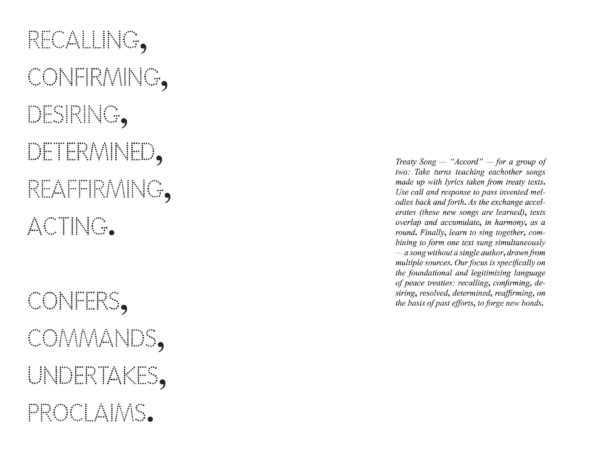 Score for a Group of Two (27 KB)
Score for a Group of Two (27 KB)
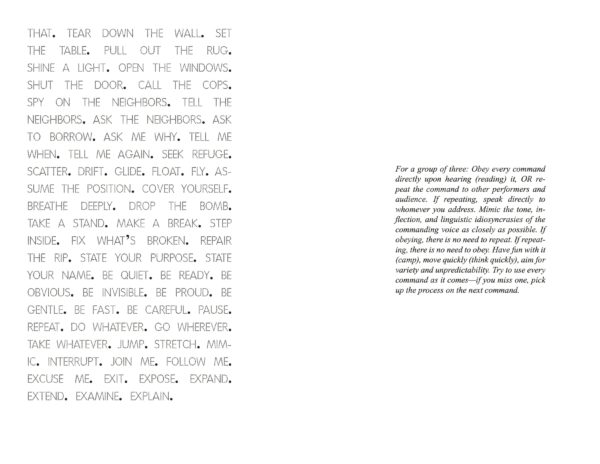 Score for a Group of Three (31 KB)
Score for a Group of Three (31 KB)
user agreement – iows – video
An image of peace, constructed through a collection of symbols and a series of text prompts. Like a group teleprompter, these videos were used as a framework for free conversation inside of the performance I Other Whisper Siren.
user agreement – 18th st
“User Agreement” installation as part of lucky dragons’ Artist Lab Residency at 18th Street Arts Center in Santa Monica
The Problem Solver (Part 1: The Pattern)
The Pattern is a path for processing thought. It is a place to move slowly, to enable thoughts to settle, a sieve or a filter. Turn a corner, wind towards center. Observe thoughts inside and outside of the pattern. The Pattern represents the possibility of embodied peace: “Positive Peace”.
Positive Peace is the presence of Equality, the restoration of Justice, and the healing of relationships. It is how we create social systems to serve the needs of all persons. Positive peace is not simply the absence of direct violence. It is the absence of both direct and indirect violence, a position completely free of worry or fear. If you desire peace, prepare for peace
The rise of soft power
dissolving of hard power
the radicalist
the gradualist
choose speed of reform
where begins process of total disarmament—
here or then?
peace as stillness
between conflicts
or peace as stillness
A description of harmony
A walking peace
Shifting energy of liberation into energy of building
examine state within to be peace
and build peace
A tarnished mirror that shines when polished
dipped in mud
passed through fire
A conscious effort to elevate life-condition
self-mastery
human revolution
healing the dull mirror
who could be your master?
how could anyone be your master?
The definition of Peace is itself unstable, varied, not agreed on. Positive peace has many simple and many complex forms. It operates at all scales, from momentary pleasure, self-healing and well being, to the complete restructuring of all societies, the complete elimination of all violence and oppression. Positive peace is a state of calm alert, a position free of worry or fear, a state of readiness held comfortably in place by external structures that affirm and improve life. Emperor Ashoka ended a long period of bloody conflict and Imperial expansion by enforcing a regime of peace throughout the empire. Stone monuments displayed his edicts of forgiveness, nonviolence, and quality of life for all beings. Carved in stone: amnesty for prisoners, an end to war, elephant sanctuaries, forests that could not be cut down. A harmonic form of dominance, derived from Imperial power. “All men are my children. What I desire for my own children, and I desire their welfare and happiness both in this world and the next, that I desire for all men. You do not understand to what extent I desire this, and if some of you do understand, you do not understand the full extent of my desire.”
Wait
What is state of readiness?
state of readiness for violence?
state of readiness for non-violence?
Positive Peace is self-control, self-rule: for you, it is an inward peace-keeping operation, refining your focus towards openness and compassion. No greater or lesser dominion than over yourself? Positive Peace is a state of being not grounded in specific actions. It continues forever as a process in the background of all human interactions. It is the beginning and the end of peaceful communication.
Do you hear that? Whistling sound? Should we tell them about it? How many are you? Who is responsible? Who owns the air? How? Does capitalism erode all pleasure? Yes or no? What does pleasure erode? Which is better: vision in motion, or discovering the subconscious?
Wait
How quietly can you speak? Show me? How far can you see? Questions for women? Yes or no? Image of the sun pendulum. Observe the sky? What is changing? Glacier in retreat, or water in advance? Observe the sky? Uncertainty or pattern? Observe the sky?
The Problem Solver (Part 2: The Tangle)
On the other side of the Pattern is the The Tangle. The Tangle is an enormous, unruly confusion. There is a critical urgency to untangle the tangle. This is a process that will require all people to cooperate with one another. The Tangle imagines Peace-Making as struggle, a form of active problem-solving: “Negative Peace.”
Negative Peace is the absence of direct violence, the prevention of harm, the prevention of war. Peace within this framework does not, by itself, erase conflict completely or permanently. Negative Peace is constant in its management of conflict. Negative Peace is the process of struggle. In the struggle to untangle The Tangle, we strategize and cooperate, we develop and share innovative techniques, new ways of seeing and solving the problem. Factions may evolve from within the struggle—some participants see more value in Tangling than in Untangling—opposing affinities form in dissent. There is fine line between tangling and untangling. Fine lines can be difficult to draw—conscious tanglers are difficult to separate from conscious un-tanglers. Their movements are similar. The Tangle is a path between persons, a language for the recognition and mediation of conflict. The Tangle addresses itself to all of us—now that it exists, it can’t ever stop existing. If the Tangle becomes untangled it may swiftly become tangled again, without our constant management and vigilance. Calm and alert. We are complicit in solving the problem of The Tangle. Whether or not we see ourselves as participants, it doesn’t matter. There is no neutral place. There is no self in isolation. The Tangle addresses itself to all of us.
Thought and action.
Stem the flow of unhappiness.
Use dialogue to create solidarity.
Inform and concern.
Peace for the sake of peace
For the sake of peace.
What inhibits the world from inventing peace? who inhibits the world from inventing peace? Violence, proscribed by strong central powers, held comfortably in place by allegiance to a group, by the naming of a population: Otherizing. Drawing the conditions for aggression, race war, class war, national war. Who is that person? and who is that person? and who is that person? Rousseau pointed out that If we had no sovereign states, we would have no war. Hobbes pointed out that we would have no peace either. William Graham Sumner wrote “if you want war, nourish a doctrine. Doctrines are the most frightful tyrants to which men are ever subject, because doctrines get inside a man’s own reason and betray him against himself. Civilized men have done their fiercest fighting for doctrines. The reconquest of the Holy Sepulchre, the balance of power, no universal dominion, trade follows the flag, he who holds the land holds the sea, the throne and the altar, the revolution, the faith— these are the things for which men have given their lives. What are they all?” What makes doctrine? What make doctrine reasonable? believable? How to un-make doctrine? How to loosen the hold of doctrine on oneself? (what is) the most beautiful word? what are some variations? can you be more specific? Would you prefer not to? ask me? have you met? and have you met? and have you met? wait what happened earlier? do you agree? how many agree? how many disagree? is this a good balance? “Doctrines are always vague; it would ruin a doctrine to define it, because it could be analyzed, tested, criticized, and verified; but nothing ought to be tolerated which cannot be so tested.”
Thought and action
Stem the flow of suffering
Use dialogue to create solidarity
Inform and concern
Peace for the sake of peace
For the sake of peace
Law only needs precedent. One premise for the rule of international law is that all persons participate in a single community, and as such, are subject to the same common law. Rights and values, having been articulated and refined through history, are acquired by the community in a process of consistent reasoning. The greater the consistency, the stronger the law. By what authority? With what permission? And who will decide? Laws between sovereign states are, like manners, difficult to enforce. Politics must be polite, or there is no recourse but to dissociate. Failing to honor a treaty, allowing the agreement to collapse, a state loses access to the process of peace. Meaningful relationships cannot be established or repaired. Agreement becomes impossible. The scope of this impossibility is made legible in The Treaty of Versailles, ending World War I: “Without this healing act the whole structure and validity of international law is forever impaired.” The Universal Declaration of Human Rights, one outline of the path to peace, exists as a treaty between all persons. It orders human lives by suggesting a structure that embraces everyone, a rule of law to which all can appeal. The right to have a nationality, to belong to a state, builds peace through structured, universal representation. Can Peace be universal? Or is peace specific? Can it embrace humankind or only the detached individual? In America, we reserve the right to refuse to belong to this or any other state. We have laws to aid our escape from law. Margaret Mead wrote that “Warfare is an invention like any other of the inventions in terms of which we order our lives: marriage, cooking our food instead of eating it raw, trial by jury, or burial of the dead, and so on” What is the next invention that will shift the order of human lives? Can it be peace? “A form of behavior becomes out of date only when something else takes its place, and, in order to invent forms of behavior which will make war obsolete, it is a first requirement to believe that the invention is possible.”
Thought and action
Stem the flow of violence
Use dialogue to create solidarity
Inform and concern
Peace for the sake of peace
For the sake of peace
Submerged in suffering
find tranquility in reasoned judgements
In world of learning
Remember the possible functions of machines?
Inventing things that can only be made with tools that don’t exist?
Are you an inventor?
Words, a healing breeze, or a sword, forms a new peace agenda: The invention of non-violent
How to redraw the abstraction of Enemy?
Acknowledge fear, stereotype, and distortion
Dissolve negative attachment to difference
Join conversation without hesitation
How does War form its own culture?
We are wasting time, resources, and energy. How much better would it be to only waste time, to become inefficient, to move slowly, with consideration, to space out, to stare, to examine closely, to imagine broadly, to search the ruins.
Thanatos the death instinct
and Eros the life instinct
Repulsion and attraction
Johan Galtung wrote that “Imperialism is a species in a genus of dominance and power relationships.” If dominance relations between nations and other collectivities will not disappear when Imperialism disappears—then how to disappear the root, the relationships that holds oppression comfortably in place? Imperialism splits up collectivities in terms of harmony of interest, disharmony of interest, and conflict of interest. There is, first of all, a gap. In imperialism the center grows more fully than the periphery. The center is enriched and nourished, while the periphery is starved. We must ask how to grow the periphery, how to transfer value, how to confuse, dissolve or multiply the center, and how to harmonize the whole? This is a problem of reality—of seeing the real—of becoming real—of realization. When image and reality do not align, but appear to align, we convince ourselves that image and reality align, a face and a mirror. We are a problem solver. We are looking at images that flip—seen upside down or sideways they un-fool the eye.”
score for recognizing a new music – intro
Populations interact, learn a language, learn difference. Harmonize, de-harmonize / socialize, de-socialize. Form tableaux (images) as a group, form compromises. Observe, witness, describe a scene. Change roles, alienate and modify, step in and out of a system, agree or disagree. In every thought: equality, access, and context.
A score for a group of three performers to discover the conditions required for a new music. By constructing a series of “images,” with descriptions of sounds painted onto costumes, the performers work through these conditions as individuals, interacting, and as a group—solo, duo, and trio; performer, ensemble, and audience.
A sound that supports
A sound that intersects
A sound that remembers
A sound that touches nothing
A sound that is toxic, becoming clean
A sound that curves
A sound translated simultaneously
A sound for other senses
A sound that consents to be
A sound equalized across the spectrum
A sound without fixed identity
A sound without fantasy
A sound varied endlessly
A sound without separation
A sound that recognizes
A sound in context
A sound in dispute
To begin: two of the three group members form one of the images described below. This constructed image can be still (a tableau), or moving (a dramatization, gesture, or activity), with sound or silent. The painted descriptions of sounds, displayed or obscured, articulate the theme of each new image.
During this process, the remaining group member acts as an observer. The observer circles an image, describes what they are able to see, asks questions, seeks clarity, and decides how to modify an image into a more stable form. The observer physically adjusts and modifies the relationships between the other performers, then chooses how to join the constructed image:
- Switch places with a performer currently in an image (this person then steps out to become an observer)
- Mimic a performer who is currently in an image
- Insert oneself between other performers
- Make an independent image in response to the first image
Once all members of the group are included in a constructed image, hold for a while. If anyone feels that their position in an image is not stable, they should break away to become an observer, repeating the above process of observing, modifying, and joining, until the group agrees that a truly stable image has been created. Once agreement has been reached, begin the process again with a new image.
All discussion and planning should be carried out in an open and transparent manner with the audience. If something doesn’t work, try it again in a different way. When changing positions, step into the role of observer first before rejoining an image.
First image
.
unity / dissolving / appropriating / absorbing / many-as-one
Second image
:
support / intervention / guiding / assisting / bridging / in-between
Third image
∴
frictionless motion / autonomy / individuation / a solitary interpretation
Commissioned by The Los Angeles Philharmonic for Past / Forward: The LA Phil at 100.
Inspired by strategies detailed in Augusto Boal’s Theatre of the Oppressed and Games for Actors and Non-Actors and Paul Ryan’s Threeing.
Performed by Maria Maea, Peter Hernandez, and Jennie MaryTai Liu, photographs by Zen Sekizawa.
Ooga Booga Bongo Music
Syllables repeated quickly back-and-forth between left and right channels, filtered and gradually mixing in and out, sounds appear as different words or sentences to some people, or as rhythms and melodies to others. based on an auditory illusion described by diana deutsch, in which our attention wanders and allows for a shift between what we hear and what we imagine—not as a puzzle to solve, but as information in raw form that we meet halfway as language or as music. Lyrics composed entirely by listeners taking note of the words and phrases they hear in the repetition.
Speak Your Own Language (2015)
Speak Your Own Language (2015) is part of lucky dragons’ continuing exploration of the auditory illusion by which short fragments of speech, when repeated, can appear as entire words and sentences like an audio rorschach test. Spoken syllables, sequenced and filtered into layered rhythms and harmonic textures, occupy an area between music and language that each listener hears differently. For this record’s cover artwork, five listeners (native Danish and Spanish speakers) were asked to write down any words or phrases that they heard, composing lyrics to the music. Released as a 7” record by Harmonipan in connection with the project Variety Gate at Museo Universitario del Chopo in Mexico City.
agreements video
Agreements 5-10 description
“Agreements (5—10)” consists of two objects (cast steel tuning forks) and six radio transmissions. Two of the radio transmissions originated with antennas in the courtyard of Ballroom Marfa, the other four were distributed at various locations around Marfa, TX, forming a ring around the town so that you were never more than 1000 feet or so from a transmitter. The transmissions, overlapping geographically and all broadcasting on the same frequency (106.1 fm), compete with one another to reach the listener who chooses to tune in. This competing interference manifests as pockets of clarity, separated by boundaries of noise and silence. Listening while moving, one can hear these borders as they are crossed, and the shift between territories can be heard as dominance rotating from one signal to another.
The tuning forks, one double-sided and the other four-sided, resonate with two and four narrowly-separated pitches, respectively. Each of these reference pitches corresponds directly to one of the six radio transmissions introduced into the otherwise quiet radio spectrum, serving as the basis for the musical universe contained in that signal. All sounds heard in a transmission conform to the tuning note, and its attendant harmonics, that belongs to that transmitter.
Cast as single objects that hold multiple reference pitches, the forks present the limits of sensing the whole of a group. Listening to each individual part in turn, you hold the sound of one ringing note in your memory in order to compare it to another sound. Similarly, your sense of each radio signal is interrupted as your position changes, and the relative power of all signals shift. This is not just a problem of simultaneity, or of a fixed point of view; this is a model of difference—a multiplicity of centers—that is based on inter-penetration, dominance and exclusion, rather than the wave-like interference of phases.
Holding one of the tuning forks in your hand, striking it or tapping it to let it ring, it is clear that each vibrating side produces a complex sympathetic resonance in each of the other sides. Holding any of the sides to mute vibrations, it is possible to alternate between a striated, harmonic sound and a smooth, pure tone. Repetition, with difference. Each transmission carries its own information. What you hear tells you where you are—variations on a theme: wild variations that conform to a system. This is, unfortunately, not the system of infinite combinations imagined when considering sound as a social material, interconnecting listeners universally and without friction, layering and blending to synthesize new forms from multiple masters. This is, luckily, the coequal and simultaneous possibility of multiple, separated centers that can interact but don’t. You can move from one place to another, or you can stay still, friction is the constant force.
∆ (Delta)
“∆” (“Delta”) is the title character of a site-specific performance that took place over the course of a month in Bee Canyon Park, in the Granada Hills section of Los Angeles—across the street from the Metropolitan Water District’s largest drinking water treatment plant, and nearby to the super-leaky Aliso Canyon methane storage facility. Every day from 4—6pm, a new performer or group of performers assumed the ∆ persona anonymously.
Like a pool of water being treated—flowing in, changing state, flowing out—∆ signifies difference, a changing state, dislocation, in process and in dispute. ∆ is a mercurial messenger, a conduit, and a portal existing in multiple locations at once—present, accessible and responsive to both local and remote sites (∆ could also be Delta, Utah; home to the Intermountain Power Project, which burns coal to make electricity for Los Angeles, 500 miles away). Embodying the remote “grounding” of LA’s water and power infrastructure across vast distances, ∆ is of the landscape, a bit of sediment washed down from the San Joaquin River Delta, not a guide, but a transplant from the source.
Delta’s Toolkit
Text-based scores inside ∆’s toolkit are composed using a specially-designed typeface. A geometric font with ornaments, the typeface mixes handmade and computer-generated shapes and curves and is not completely readable by either machines or humans.
delta
Each performer or set of performers assuming the role of ∆ made use of a “toolkit” that lived on-site—a specially-designed container made to hold scores, objects, and materials for use in daily tasks, interactions and meditations. Sculptural as well as functional within each performance, objects in the toolkit served alternately as props, costumes, and staging materials (a banner becomes a garment, becomes a blanket, becomes a shelter, for example); tools for documentation, communication, sound-making, writing, and analysis; and elements in choreographed exchanges, dances, and musical gestures.
Every day ∆ opened the toolkit to find instructions and resources for performance and engagement with visitors—ceremonial exchanges, as well as actions staged for video, photographer, or sound recorder—remote cartography (tracing boundaries and topographies), and processes of filtering, purifying, processing, and transmitting. At the end of each day, ∆ returned the contents to the toolkit where they are stored until the next day.
The Spreading Ground
The Spreading Ground (2016) was a month-long series of open rehearsals and performances at Hansen Dam, regularly scheduled practice for moving through Los Angeles as a site of transformative power and environmental hazard, commissioned by the Los Angeles Department of Cultural Affairs. This performance practice sought to connect ideals of natural beauty with precarity, and the infrastructure that holds this balance in place at inhuman, yet profoundly accessible, scales. The open rehearsal process resulted in the composition of a simple text score for movement and voice, a libretto that was painted across costumes like banners, and a collection of electronic sounds composed for a large group of bluetooth speakers. The Spreading Ground culminated in a dramatic walking meditation by a chorus of fifty performers, each performing a discrete part of the score, spread along the two-mile length of Hansen Dam with audience interspersed and constantly moving alongside.
The Spreading Ground – video
The Spreading Ground
Libretto:
A:
1.
warm air meets cold dove
rushing down denuded slopes
2.
cloud burst over higher
elevation inland moving
3.
cloud saving for summit
gullies feed canyons
4.
Los Angeles River east
San Gabriel River west
5.
stay between levees
city of a thousand rivers
6.
deposit silt
soak below
flow to sea
7.
fertile beds alluvial
sediment plain lush
8.
hydraulic order
unruly river
smooth out uneven
9.
uncertain rainfall
un-flowing as planned
10.
steep slopes
small ranges
plain to pinnacle
11.
tectonic moves
rise like himalayas
12.
clay so soft
forms to hands
13.
chapparal blazes
flames regenerate
14.
foothill flip bucket
predict the slide
15.
flood flow
channel volume
levee strength
16.
forbidden territory
freeway overpasses
17.
return sycamore
return oak
return cottonwood
18.
riparian civil disobedience
mental maps of southern california
19.
no signs of life
sun high in the sky
20.
raindrops vary
places rain does not reach
21.
rage with flood
dry in the sun
22.
oranges, acorns, currants
blackberries, gillyflower, jessamine, tuberose
23.
water privilege
riparian rights
24.
mountains riding clouds
mountains walking on water
25.
mountains walking like humans
forward backward on water
26.
no original water
no common water
27.
water commons
superstructure
matrix of water
28.
underground river
subterranean streams
flowing in channels
29.
beneath the river bed
underground water
30.
ditch drag thicket
channel concrete
31.
downslope impermeable
layer gathering
32.
hillside saturate glob
too dry to flow
33.
detritus cones
inundation zone
34.
concrete articulation
river future
35.
improve water quality
enhance riparian
36.
industrial whiff ripping
stately heron
37.
water trickle
earthen low-flow
38.
persuade the public
the river exists
39.
brutal trip
pioneer drag
western settlement
40.
abundance of water
from elsewhere
not here
41.
chalky river relocated
snake of water
42.
artesian well driller
ditch tender
43.
save your head from water
save your head from fire
44.
water underground
spreading ground
45.
rainfall to fill
sandy bed
capricious cloud
B (shared):
Flood Control
Spill Away
Flows Within Boundaries
Spreading Ground
C (shared):
cloud
flow
away
soak
freeway
—–
flood
worlds
water
you
Unanswered Question – video
unanswered question at mountain school of art
whistling sound?
shall we tell them about it?
how many are you?
who is responsible?
who owns the air?
how?
does capitalism erode all pleasure?
yes or no?
what does pleasure erode?
who is this person?
and who is this person?
and who is this person?
sun image
dark object
cease to exist
which is better
vision in motion
or discovering the subconscious ?
let’s back up.
did you see the beach?
did you know there are two species of wildflower that live on antarctica?
how quietly can you speak?
show me?
how far can you see?
questions for women?
yes or no?
image of the sun pendulum
observe the sky?
what is changing?
glacier in retreat or water in advance?
uncertainty or pattern?
(what is) the most beautiful word?
what are some variations?
can you be more specific?
Would you prefer not to?
ask me?
remember
the possible
functions of machines?
inventing things
that can only be made
with tools that don’t exist?
are you an inventor?
have you met?
and have you met?
and have you met?
let’s back up.
what happened earlier?
do you agree?
how many agree?
how many disagree?
is this a good balance?
HR performance 11/2015
Actual Reality
“Actual Reality” (2011—Present) is a serial multi-media work that develops over the course of many iterations and forms: a scored performance, an improvised response, a piece of software, a libretto text, audio recordings, a video-in-progress… Each new version processes and re-synthesizes previous Actual Realities.
“Little by little it comes into view like a condensing cloud; from the virtual state it passes into the actual; and as its outlines become more distinct and its surface takes on color, it tends to imitate perception. But it remains attached to the past by its deepest roots, and if, when once realized, it did not retain something of its original virtuality, if, being a present state, it were not something which stands out distinct from the present, we should never know it for a memory.” – Henri Bergson “Matter and Memory”
We experience sound moving from live utterance to processed signal, amplified and diffused into the room. We enact a translation, listening and responding to the processed signal, attaching new layers to it, simultaneously forging and following a wave of sound that condenses into patterns and disperses into clouds. Video images form for us an anchor in time, progressing slowly, with action that is hard to perceive until gradual changes are made apparent. A flute, a lily, a newspaper, a triangle, a mirror, a discharge of smoke—-these visual elements provide a medium through which to perceive a specific speed, a dilated scale of time passing.
Actual Reality
Actual Reality
Actual Reality (Libretto)
Actual Reality – The Sun Artist Takes a Walk
“The Sun Artist Takes a Walk” (2014-15) is a version of “Actual Reality” that borrows its shape from a series of workshops conducted by San Francisco-based artist, scientist, and educator Bob Miller. Beginning in 1975, Miller’s “Light Walks” led small groups of participants in the active noticing of sunlight resolving into images through naturally-occurring pinholes, shadows, and reflections.
“…what I used to think of as uninteresting diffuse white light turns out to be pretty damned interesting. If you think of every little area in space containing, in the light, all the information for a full-color, completely detailed image of things both nearby and far away—here in this little area of space, and here… and here—then it seems to me that we’re walking around all the time in an invisible sea of images. All you have to do to see one of them is to put your eye right “here” and let in one of those little specks of light. And on top of all that, you see it “out there,” projected on the real world. Wow!”
“Actual Reality” proposes, then, that all streams contain images. To play, and to pay attention, is to resolve these images, seeing them for a moment as reality.
Make a Baby
“Make a Baby” (2004 – Present) is a synthesizer played by two or more people touching one another on the skin.
How it is implemented—the social structure of the thing—is more slippery, highly contingent on context and audience participation. Our intention, and our measure of quality when comparing one version of “Make A Baby” to another, is to sustain a social space that has no fixed center, and yet forms a cohesive, purposeful sense of belonging to a group engaged in common action. From this essential balance, we can extract other criteria for success: each individual gesture should be perceptible within the group effort (a sense of transparency and agency); the boundaries of the group should be highly permeable—participants can easily shift from active (playing) to passive (listening or watching) engagement; the actions required for participation should be easily taught on a peer-to-peer level. Overall, there should be a sense of continuous playfulness that invites cooperation and innovation.
To these ends, the supporting technology provides unexpected possibilities for distributed control—every point of contact between participants generates some perceptible and significant change in the sound. The software component, with an architecture similar to that of a scalar network analyzer, learns about the structure and quality of connections between distributed nodes. As each signal, carrying a signature frequency, is passed between players, momentary networks are built and dissolved. The forms of these networks, when translated into sound, provide a shifting map of our engagement, the inter-penetrating sum of our individual actions.
Although the two primary modes in which one interacts with this piece are listening and touching, it is easy to describe the experience visually—the shapes made by a group of people finding points to connect across a room, a physical network of hands and arms, attention divided between so many simultaneous points of action. There is a vibrant relationship between the centers (every point of contact that seizes control for an instance) and the margins (frontiers and boundaries, a perimeter with global perspective). In terms laid out by Pauline Oliveros, it is experienced through “focal attention” (points of contact), and “global attention” (the result of all points of touch together). Does this vibrant oscillation, this quick mobility between individual and collective engagement, bring with it a certain awareness? At the very least, there is evidence of the possibility for communicating amongst ourselves directly, supplementally, the complex and ineffable experience of being an individual within a group.
View / Download “Make a Baby: Touch-mediated Interaction” as PDF (244 KB)
Make a Baby (video)
Make a Baby (video)
17000 observations
“17,000 Observations” (2014) is a musical composition and sculptural installation developed specifically for the floodplain forest at Laguna Gloria, in Austin Texas. A mobile made up of circular mirrors is suspended between trees across a footpath, reflecting the forest in unpredictable ways, aiding and complicating each viewer’s line of sight. Field recordings made on-site over a 24-hour period form the basis of the musical composition: the songs and calls of migratory birds overlap, modulate, and give way to one another in sequence. Each audience member determines their own path through the performance, following the forest’s natural trails to collect fragments of call-and-response from an instrumental ensemble dispersed throughout the floodplain. “17,000 Observations” is an attempt to respond to—and reinforce—the sequences and transitions that accumulate to define a natural site, from all around, with no center.
17000 observations – video documentation
The Anti-Explainers
“The Anti-Explainers” (2012-2015) is a collection of experiments and interventions performed while in residence at the Exploratorium’s Center for Art and Inquiry in San Francisco, including the public artwork “DAYLAY” (2013-2014), an interactive audio installation on The Embarcadero that captured sounds to be played back after a twelve-hour delay.
The Anti-Explainers (Book)
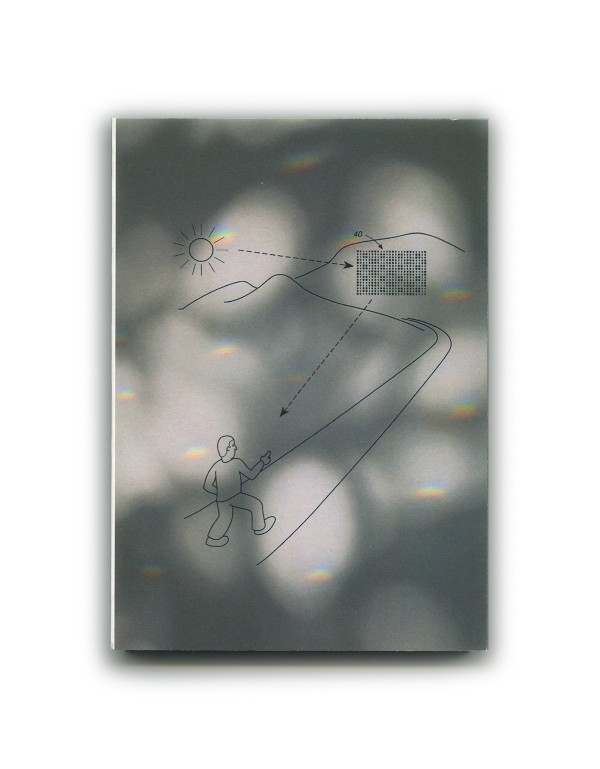 View / Download as PDF
View / Download as PDF
(1.7 MB)
The Anti-Explainers
Microphones inside of a hole in the pier perpetually capture sounds, playing them back through on-site speakers after a twelve-hour interval. Nothing is recorded, only delayed. An environment is shifted. An invitation to leave a message for the future: night speaks to day, day speaks to night.
All sounds were subject to the same delay, without discrimination: seagulls, trolley cars, skateboarders, church bells, school groups, office workers, tourists, families, lovers, foghorns, delivery trucks, queries, fantasies, confessions, wind, rain, screaming children; the audibly prurient thoughts that occupy people of all ages speaking into the void. Our intent was to produce two irreconcileable results: on the one hand, to render a realistic portrait of the natural and social sounds of one time overlaid onto another time (a sort of factual window for listening through to a different time at the same location), and on the other hand, to invite visitors to contemplate and engage with their own imaginary experience of this other time—to actively touch the other (as yet non-existent) time. Our project here is to examine the feedback loop produced by these twin results, not by categorizing, but by presenting their complexity verbatim.
Is the relevant learning experience to be found in focused attention on sound (both as a material and a signifying medium)? Is the exhibit’s primary purpose to play back / to present for the listener, or to offer, in the process of time-shifting, a platform for experimental performance? We propose that a relevant learning experience can be found in the creation, by speakers and listeners alike, of a common imaginary, a virtual space for contemplation external to our lived experience. I wonder where my voice went (what does it do for twelve hours?). I consider the qualities of a moment lost inside a vast duration. I switch places with the listener, bringing a message backwards from the future into the past. Why not?
Taken as a continuous document, the recorded messages present a rapid and unpredictable montage of emotional forms. Some speakers invoke complex and playful narratives consisting of interactions between multiple characters, story-lines, and time-space locations. Other speakers laugh or curse when nothing is obviously funny or upsetting, leaving an embarrassed phantom shocked at its own creepiness; uncanny for being a recording, and irresponsible for being delayed.
Why speak, if the audience can’t be verified? Paranoia interrupts, the un-knowable listener is cast as “inhuman,” albeit an inhuman that we share space with and can communicate with: “Nobody” will be there / “Nobody” was here—or “Whoever is here, I hate you,” “I will kill you,” “I hope you die,” and so on. Often this takes gentler forms, as interspecies communication (whale song, “Sharks come out!”, “Hello, fishies!” etc.), or command utterances seeking a cure for disarray: “Go to work!”, “Go Home!”, “Get a job!”, “Go to sleep!”, “I hope to be at home safe.” For a group encountering the piece all at once, the mania of showing off, along with a tendency towards imitation, results in funny looping stutters, as variations on the roles of teacher, student, reporter, monster, victim, etc. are worked out.
How do we rationally understand a time scale or duration outside of what we are able to sense? Every interaction is also a test of the channel’s openness, a question uselessly waiting for an answer to travel across an interval that, while not impossible, is improbable for anyone finding themselves at the installation site to directly experience. Leaving a message as a ‘proof’ or ‘truth’ of a proposition that is un-testable (un-thinkable?) in the present moment engages a need very close to our own desire to collect and convey these messages, first through the mechanism itself, and now through these eavesdropped transcriptions. In the act of composing messages for future listeners, each speaker has given a unique form to the sensation of holding one’s attention in two times at once. As artists-in-residence transiently interacting with communities of practice, our research is presented beside the work of explanation and inquiry carried out by visitors and staff every day. In the usage described by Eve Kosofsky Sedgwick: “Beside comprises a wide range of desiring, identifying, representing, repelling, paralleling, differentiating, rivaling, leaning, twisting, mimicking, withdrawing, attracting, aggressing, warping, and other relations.” As artistic research, this project is not to essentialize, nor to act as role-model or interrogator, but primarily to listen, and to provide forms that are able to preserve contradiction.
wrong spectrum
“Wrong Spectrum” (2008-Present) is a performance centered on the idea of overlapping and inter-related spectra: rocks collected at the performance site, or reflective materials such as beautiful CDs (which take one million years to decompose) are placed in a beam of light, used by audience members as instruments to interact with both the passage of light and surrounding electrical fields, affecting changes in sound and light through the coordinated movement of participants’ bodies. From this basis in slippery interactive effects, the project’s scope expanded to explore the phenomenon of edge-color spectra, in which incremental variations in viewing conditions produce a range of spectral effects.
Wrong Spectrum (Book)
 View / Download as PDF
View / Download as PDF
(1.8 MB)
Wrong Spectrum
a wave that interferes
For “A Wave That Interferes” (2011—Present) two transparencies with simple black and white patterns are moved by hand to create visual interference – a moire effect – that is translated into sound as the changing shape of a waveform. As the visual pattern becomes more complex (diamond patterns emerge), harmonics are added, and the soundwave becomes a square. As the visual pattern becomes simpler (separates into lines), harmonics are subtracted, and the soundwave becomes a triangle.
a wave that interferes
a wave that interferes
Excerpt from Sarah Rara’s video “A Ray Array” (2011, HD video w/ sound, 58 minutes)
Wow Mix
Speak Your Own Language (2012)
Relax in a Hurry
By speeding up music made explicitly for the purpose of attaining a relaxed physical and mental state, can a listener reach such a state in less time? is there something essential in the material of these sounds, divine frequencies, that if experienced not as a tone, but as an impulse, can provide a shortcut to well-being for the busy listener? how fast can we listen?
Existers
EXISTERS resist without intervening, subsist without consuming. They are everything about living except life, showing the effects of attention on a thing over time. “EXISTERS” harkens to all things slow, delicate, and sharp–music for drifters, onlookers, and aliens of the everyday,
The EXISTER, the lurker in the dusty corner, is the one who watches, and by watching brings an event to life. EXISTERS are embodied by the Low Frequency Oscillator, an undertow that never fully begins or ends, that saturates a space with unresolved attention.
The DOERS possess an industriousness, a momentum. DOERS power through nothing and name it something. DOERS prefer the sunshine, while EXISTERS prefer the shade. The DOERS are embodied by the sequencer, a sense of movement, a ticking, a clicking, a powerful feeling of action, an attitude and a voice.
For REPEATERS, held separate from beginnings, too wearied by the present to energetically greet the future, change has lost meaning. REPEATERS, opposed to stability, sleepily perpetuate lability: after an infinitesimal perturbation, they have left their initial state for ever.
CREEPERS are pure effort, negative pleasure, growing from a lack, a vacuum, not from any need or desire. Working a job, moving in spasms from stop to stop.
STREETERS imitate, mock, lampoon and profane. They reproduce, they wear costumes. They protest, producing expressions of objection, negating and cancelling. The STREETERS are engaged in “civil disobedience”–a polite (eg. non-violent) refusal, as well as a refusal of politeness (removing oneself from the rule of law).
EXISTERS can be exhausted, weighed down, asleep, but EXISTERS don’t remove themselves from the world while sleeping, or spacing out, or changing speed. For the EXISTER these are ways of being in the world, of staking a position against an ecstatic background. These are gentle, lazy, face-to-face contacts with infinity.
Plural titles indicate the proliferation of life. In all its disparate values and manifestations, life multiplies.
Long Form
A Ray Array
Shape Tape
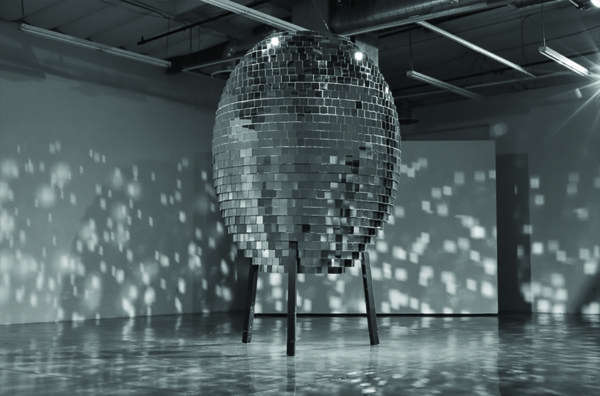
The Upward Spiral
Optical illusions have a healthy life in the world—as puzzles, cognitive experiments, quiz tricks, and platforms for mind-bending artworks—but auditory illusions (tricks of the ear) are less well documented, less well understood. Two examples of auditory illusions that were discovered relatively long ago, Risset rhythms and Shepard tones, deal with pitches or looping patterns that give the appearance of constant motion in a single direction: infinite acceleration, or a pitch that is always rising—the sonic equivalent of a barber pole stripe, moving upwards as it rotates (the opposite effect, a pitch continuously descending or a rhythm forever slowing down, also qualify). Examples of these illusions privilege the smooth, consistent rise: seamless and eternal. But what about the lumpy, striped or stepped rise, hopscotching or leapfrogging forward? Isn’t there something salient and familiar about a clumsy version of vertigo?
Accelerationism proposes an end-game scenario for capitalism that either transcends the currently visible horizon, entering some unforeseen landscape (free from constraint), or results in technological singularity—in either case, eternal acceleration suggests moving along an asymptote so extreme that it provokes an ontological shift for everyone. These sounds play with the auditory illusion of continuous acceleration, but with a particular focus on the clumsy, spontaneous, and sporadic leaps that reflect our own engagement with progress. Two steps forward one step back; we digest the shapes of boundaries, constraints, and borders which attempt to guide us into smooth channels, as we blindly expand forever in wild directions.
Hawks And Sparrows
“Hawks and Sparrows” (2003) is a collection of reconstructions, rearrangements, and reenactments drawn from field recordings of four anti-war demonstrations (Seattle, New York, Philadelphia, and Washington DC) protesting the US invasion of Iraq in late winter 2003.
Washington DC January 21st 2003 On the bus down I was sitting with a group of Iraqi women who fed me Baby Ruth bars and Almond Joys. I met my mother on the steps of the Supreme Court and spent the day separating from her and meeting up again, getting lost in the crowd. We walked along the march route for a long time, but split off to visit a farmers’ market in a neighborhood she had heard of but had never visited.
Seattle February 15th 2003 I got a ride up with my friends Brian and Morgan on Saturday. We bumped into a number of people from our school as we marched through the city. When the monorail passed over, the drivers honked in support. After the protest ended, we went to an enormous Asian supermarket for lunch.
New York City February 15th 2003 Becca was set to meet me by the downtown lion at the main branch of the public library, but I had to fight my way to get to it, there were so many people. Everyone was making a ruckus of some sort. This lady stood out, she was making a different sort of ruckus into her cell phone. The obscenities pouring out of this lady’s mouth were a bit more exaggerated than the protest banter. She had agreed to meet her friend at the downtown lion as well, but her friend was at the uptown lion. This lady could not walk 30 feet to resolve the miscommunication. Instead she had to chastise and humiliate her friend over the cell phone, let her know how angry she was, let everyone around her know as well. Cops stole my drumsticks and I had to use spoons which I bought from a hardware store. someone threw fireworks at a horsie cop. Then I met up with becca, she had been less than 10 feet away from me the entire time!
Philadelphia March 30th 2003 It was very cold and raining off and on. Peter and I walked all the way from our house down to where we thought the protest was, several miles away, but the place was empty. We met a girl who thought maybe people had moved to the federal building so we walked there. We were the first ones there, but after a short while the marchers showed up and we joined them.
A crime was carried out in our name. we spoke out against it. How will time change our memory of this? Memory is our weapon. All sound sources used in the making of this cd were recorded at the protests listed above. Spoken language, rhetoric, dogma, incantations, and chants have been removed, leaving behind music, pauses, affect. No synthesizers were used on this recording.
“Hawks and Sparrows” includes contributions by Wrist + Pistols and Big A Little a. Released April 4th, 2003 as a free unlimited download and a limited edition of 100 cd-rs packaged individually with the first flowers of spring in clear glass cases, distributed by reverse shoplifting, filed under “h” in any record store.
This work is in the public domain.

